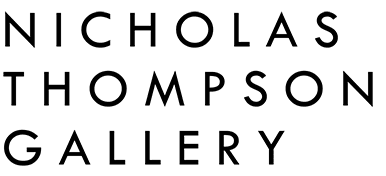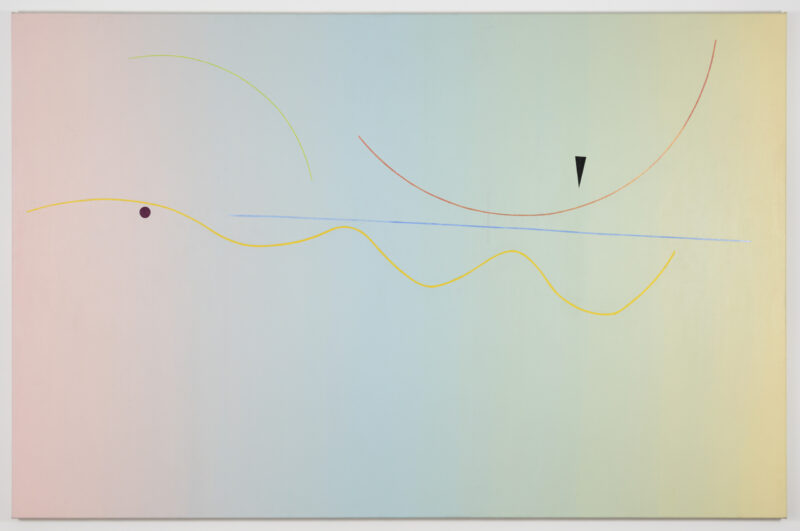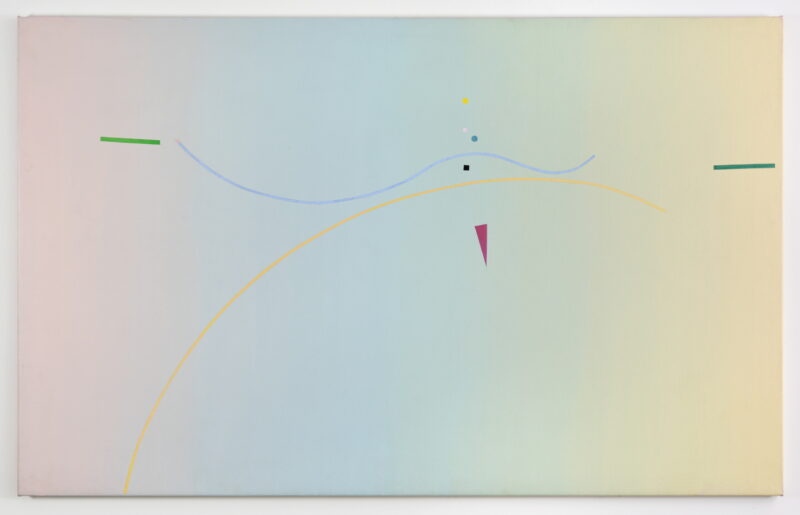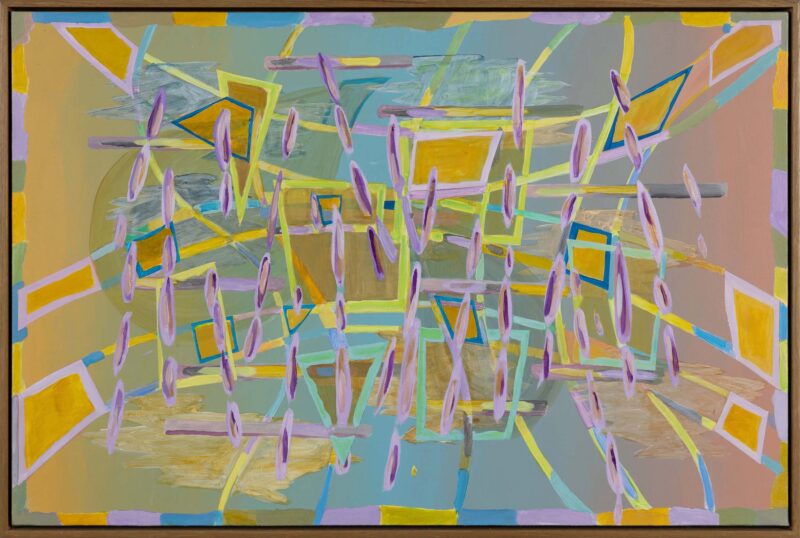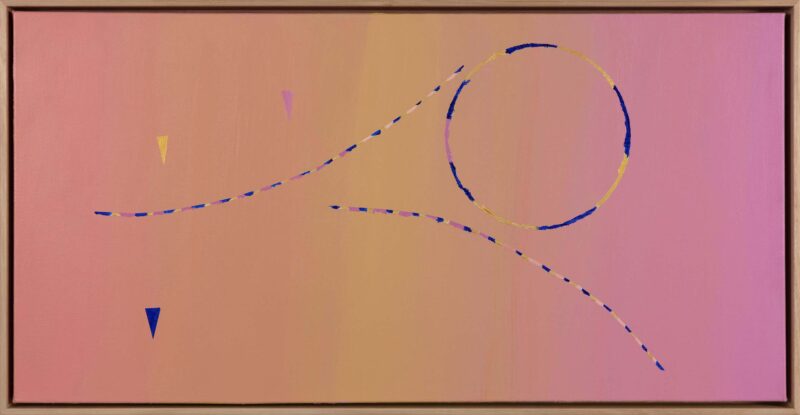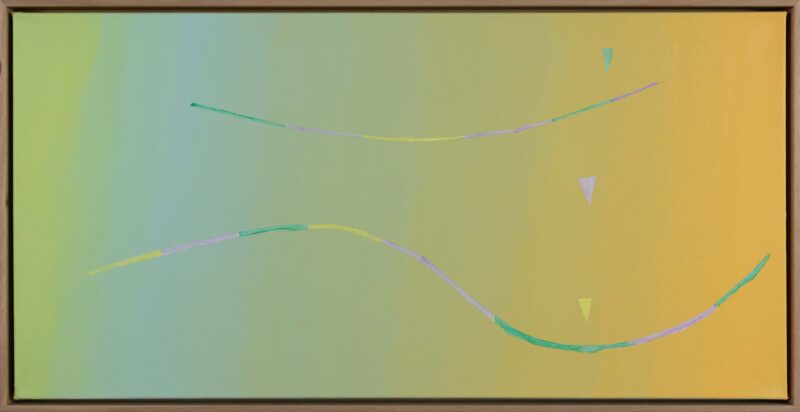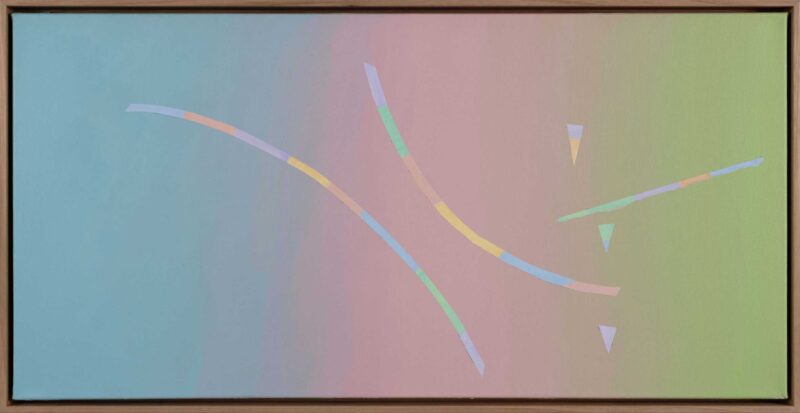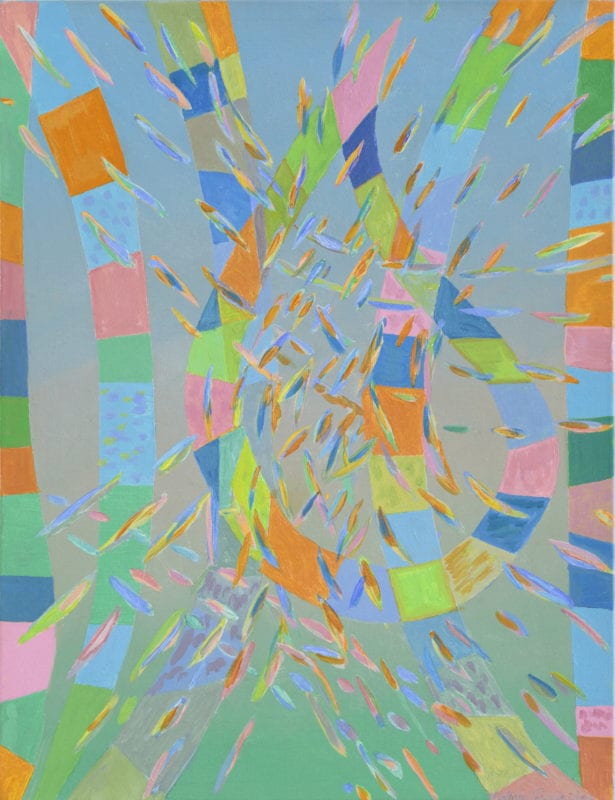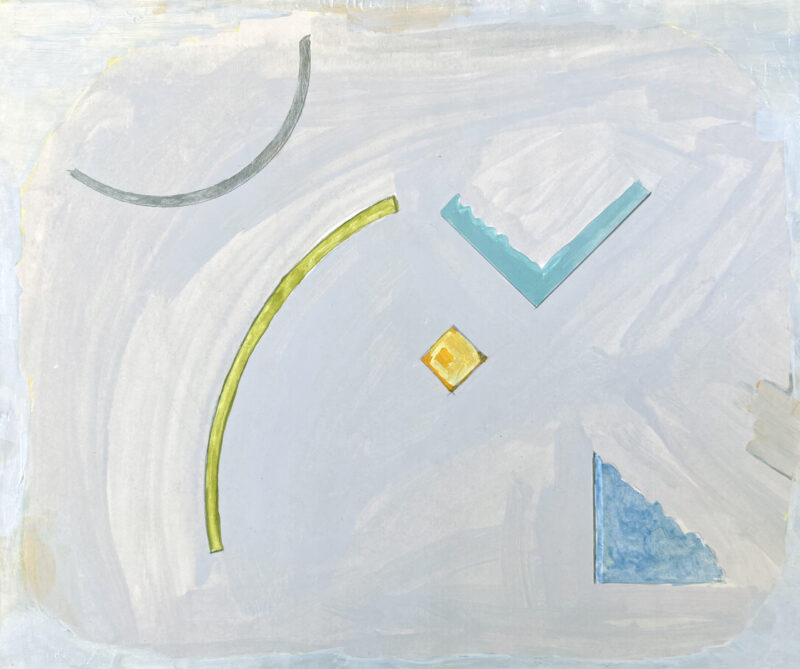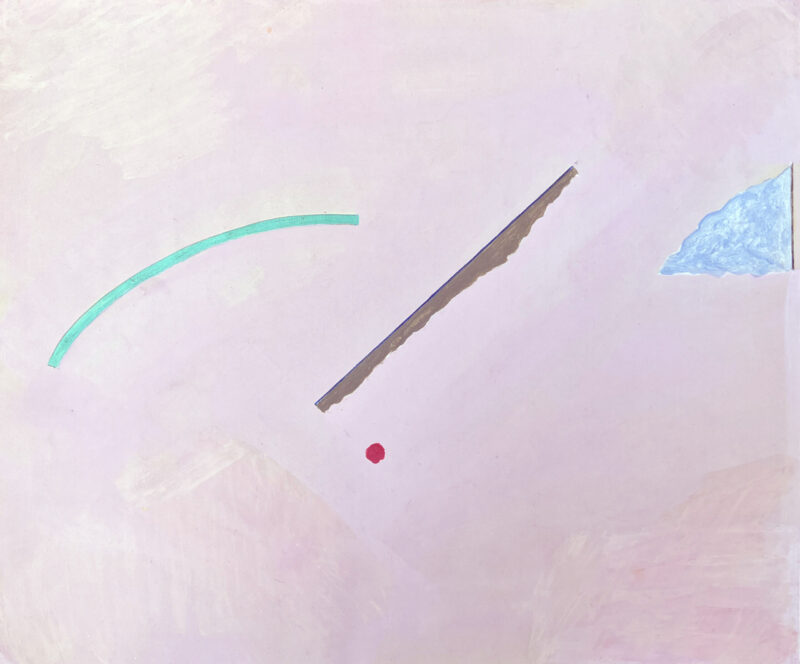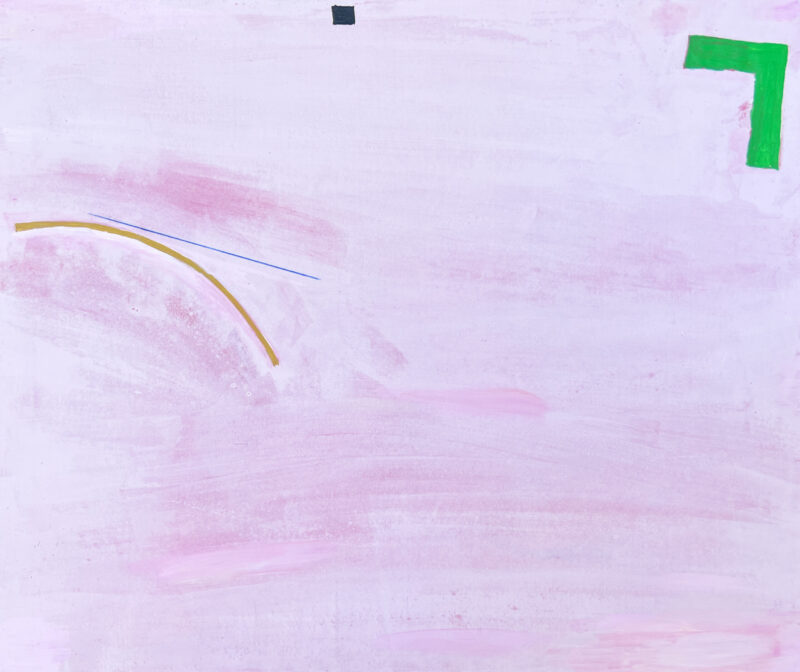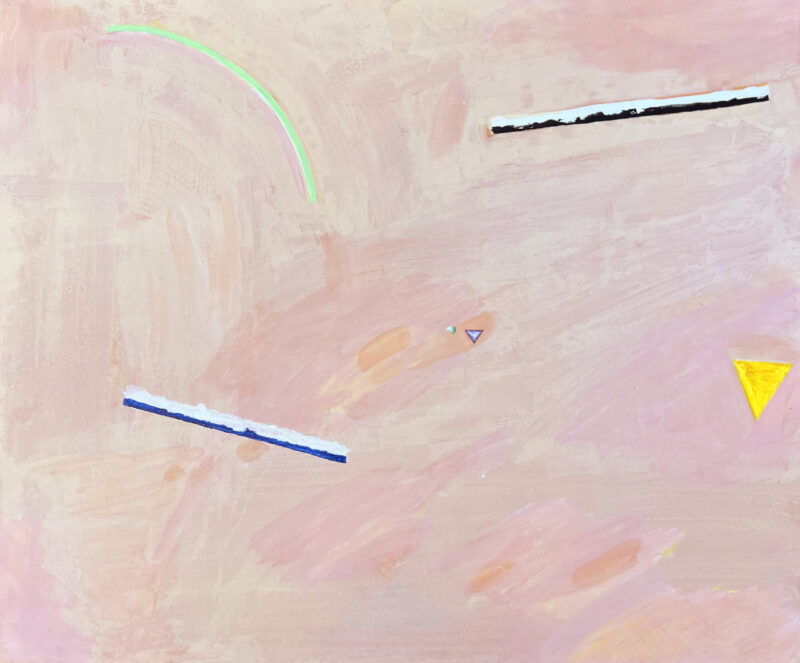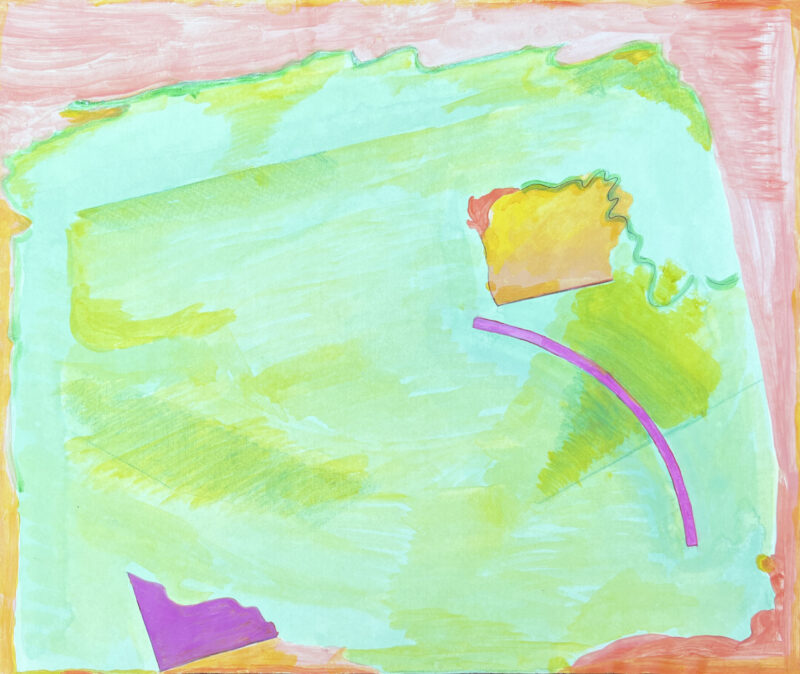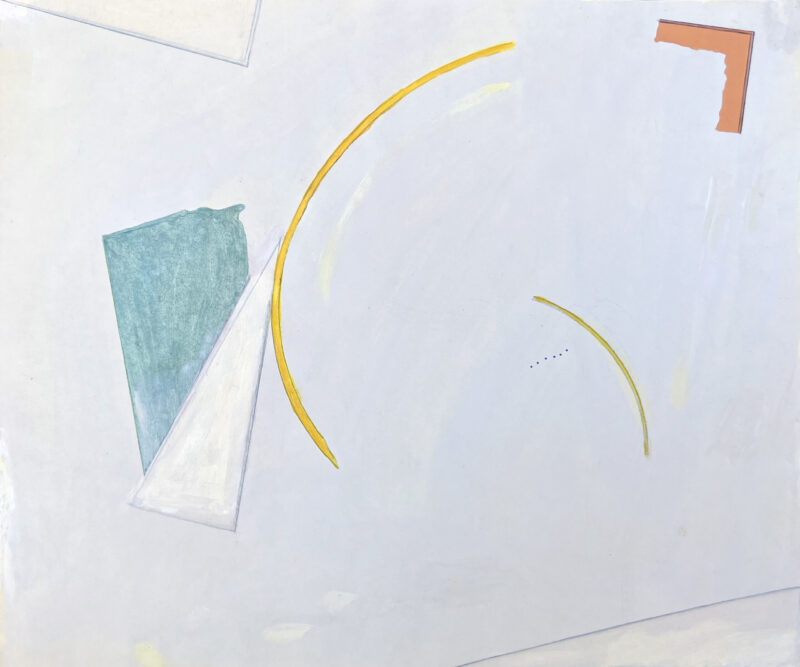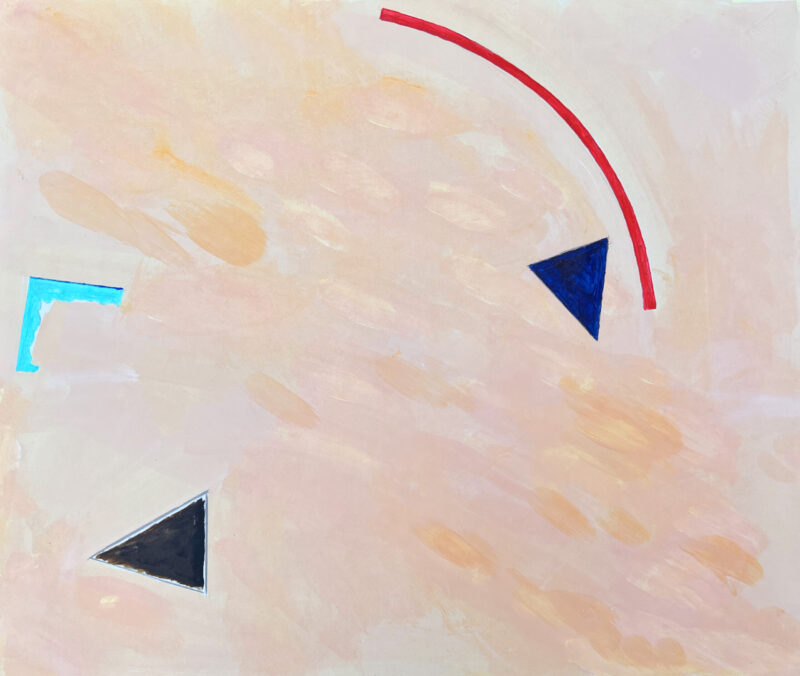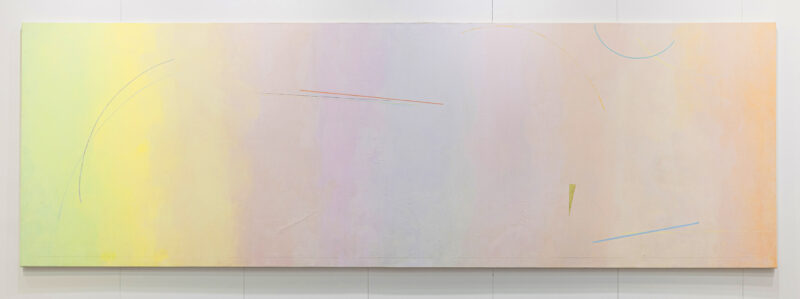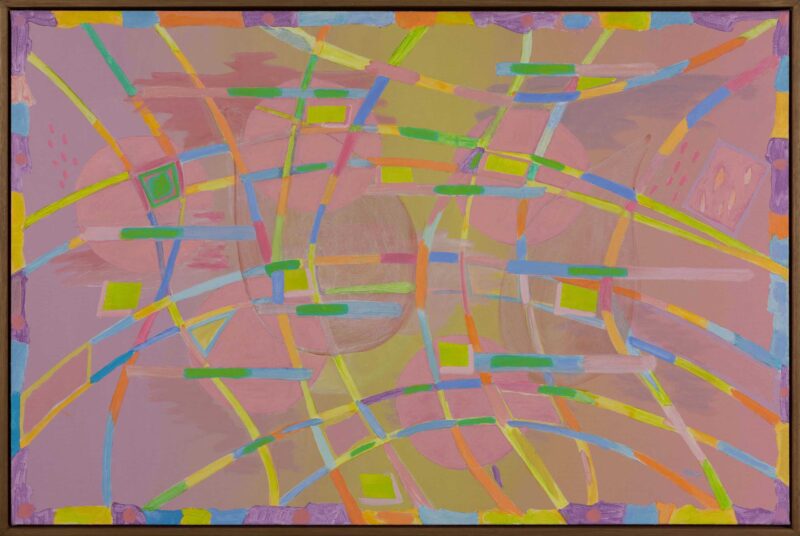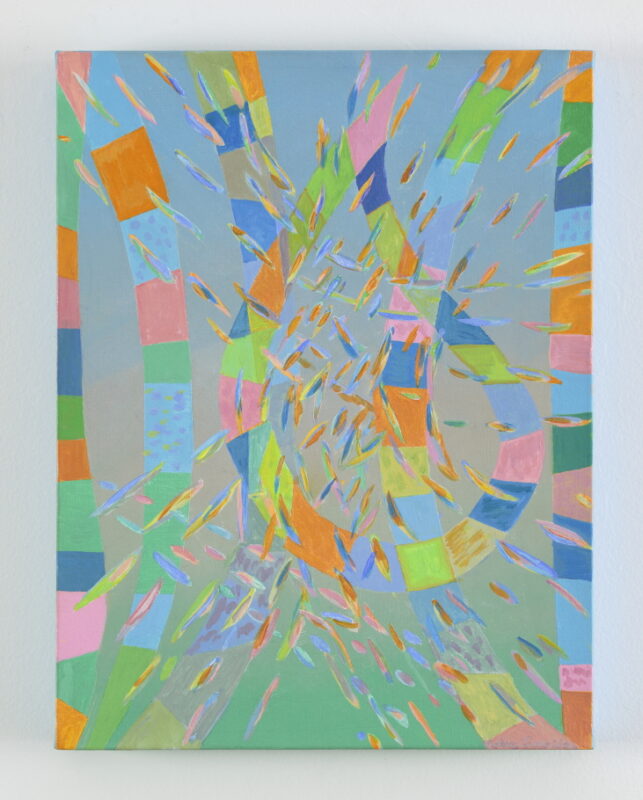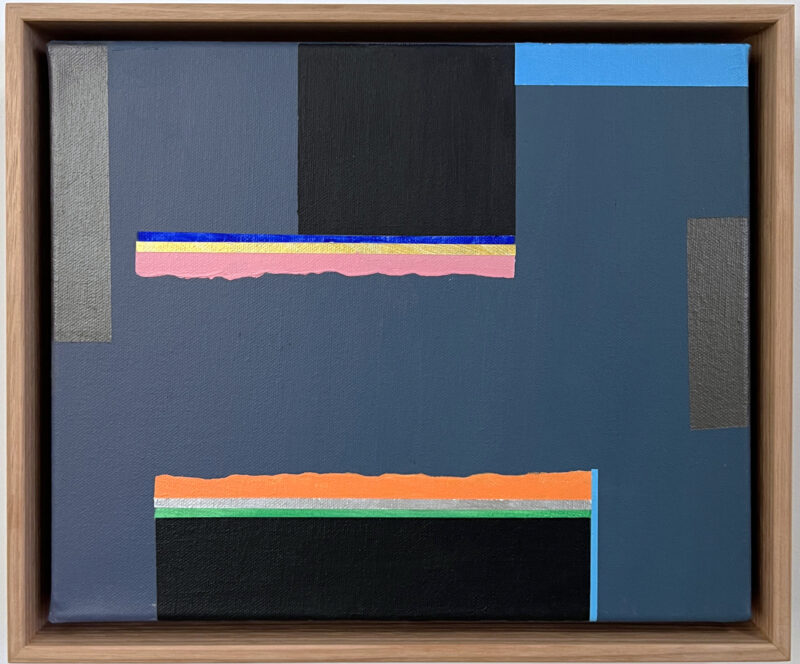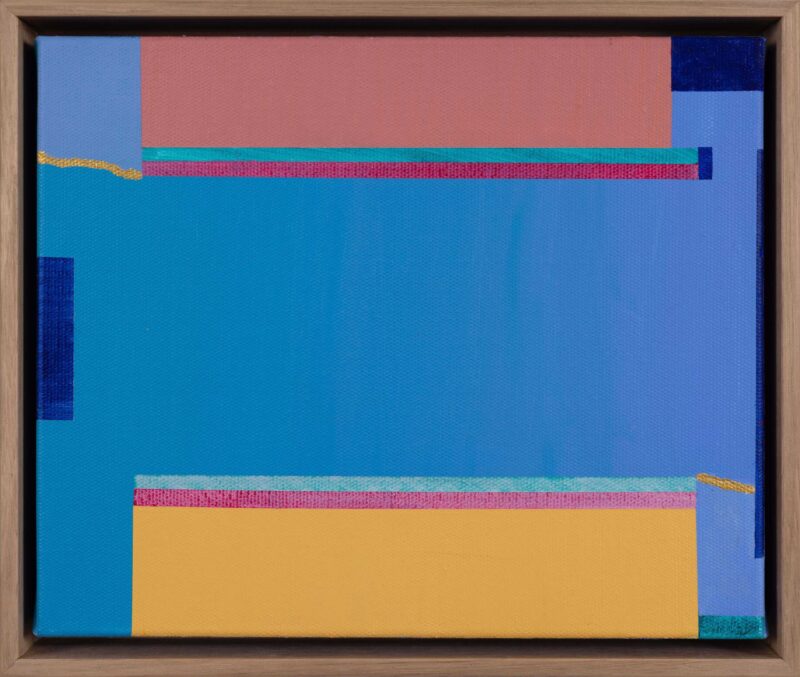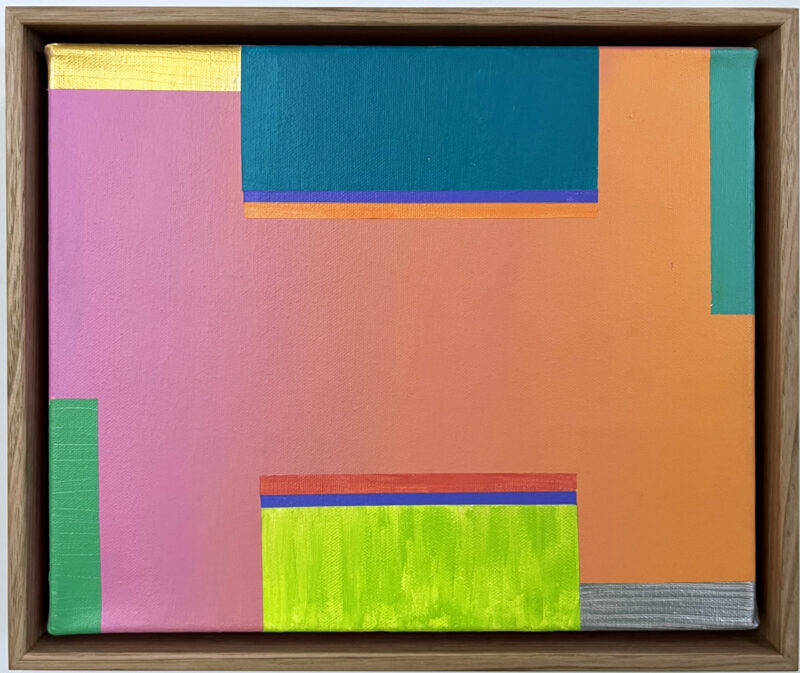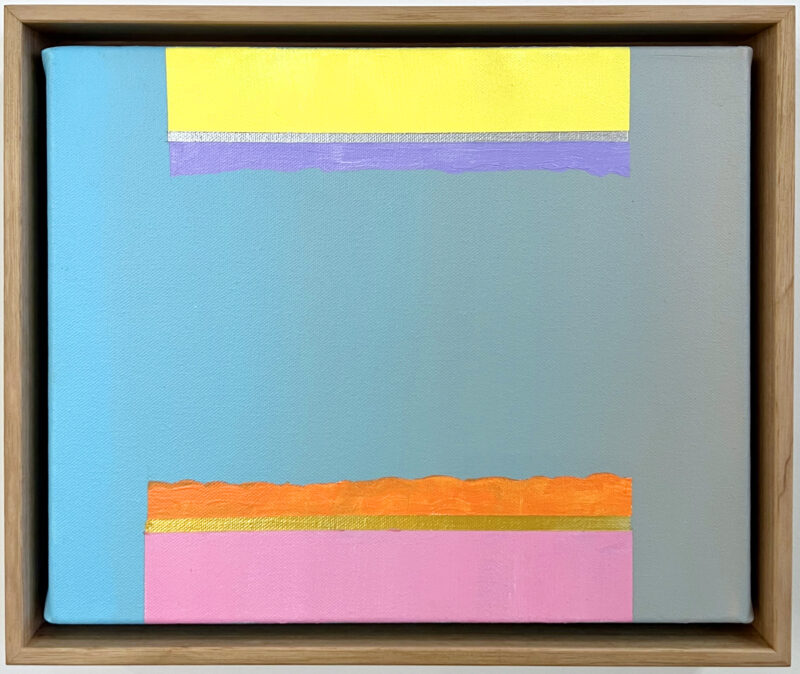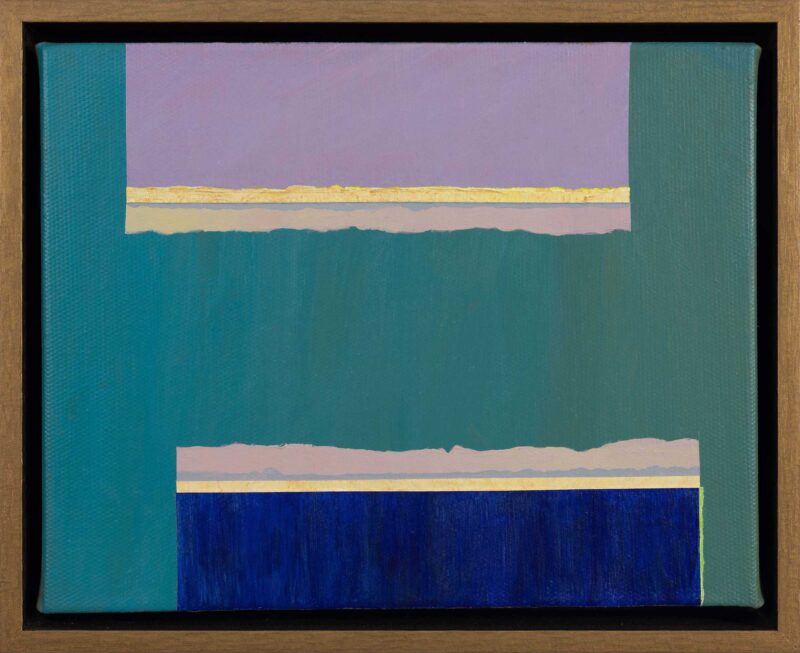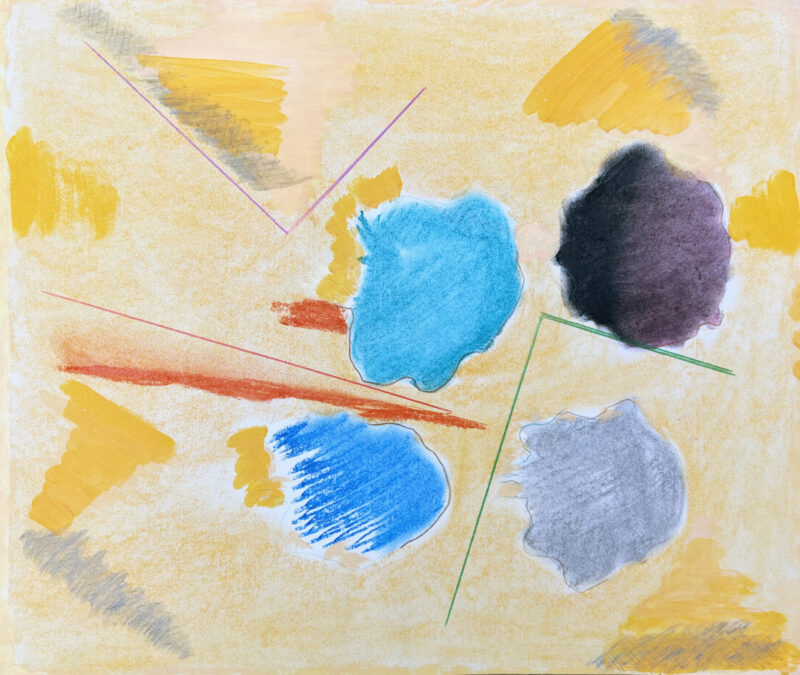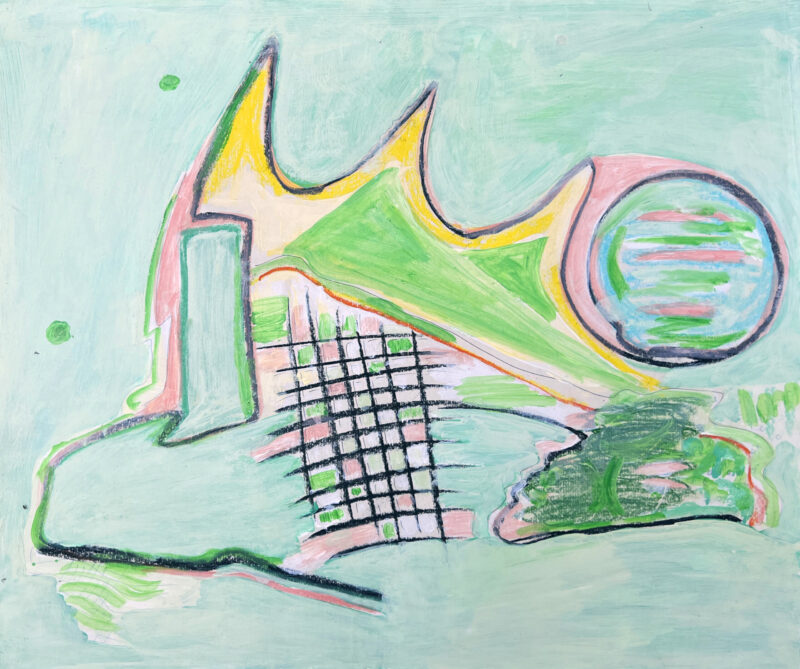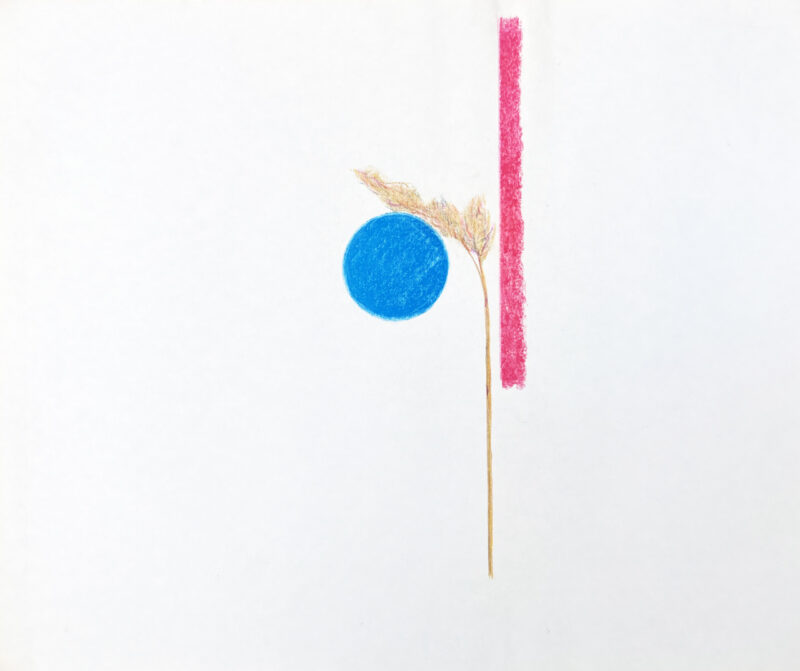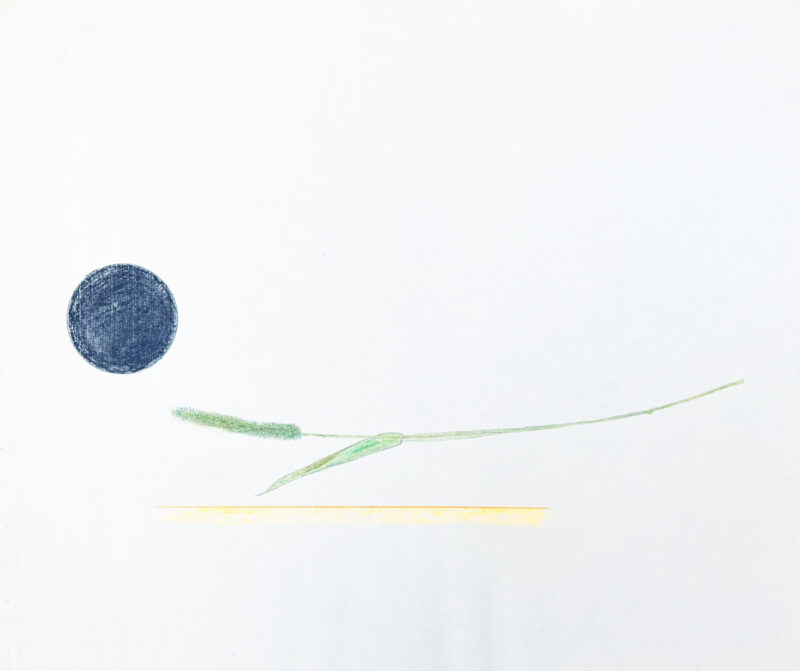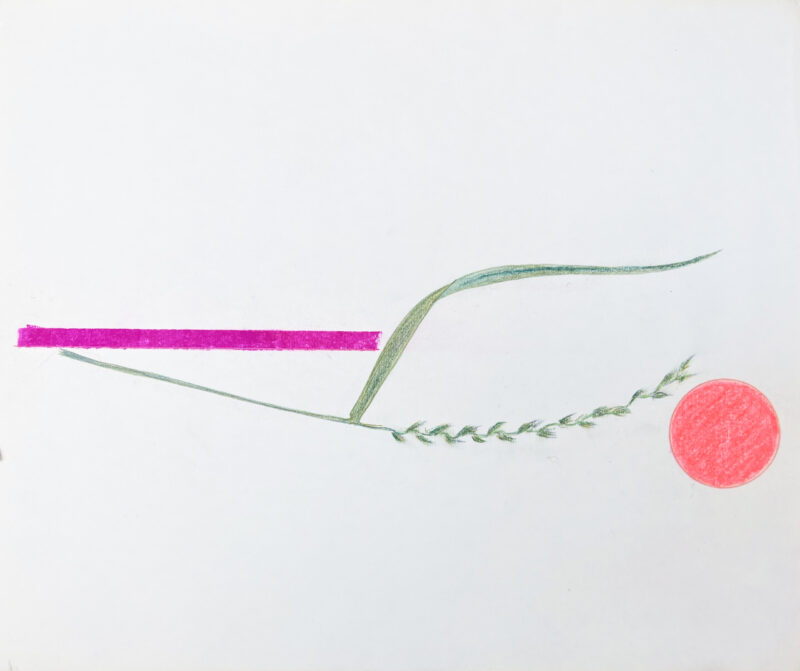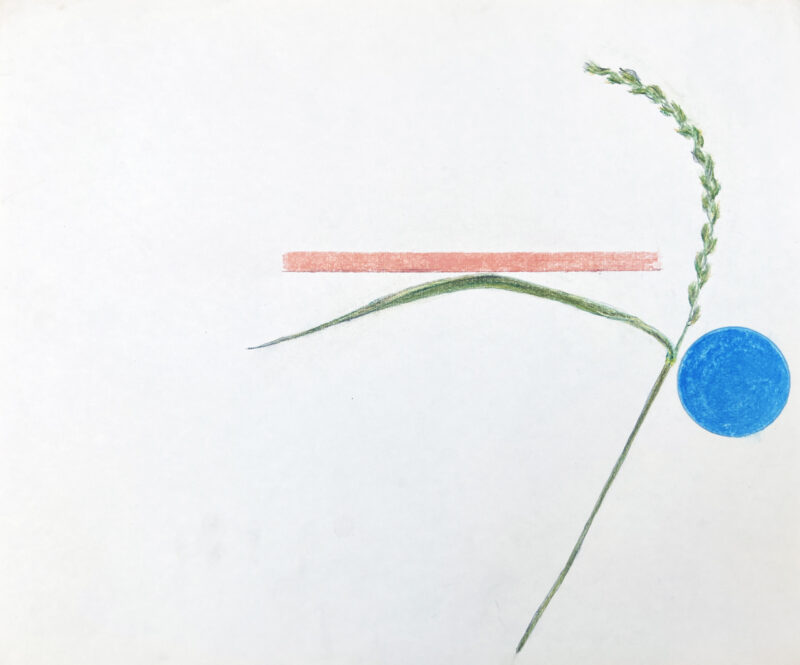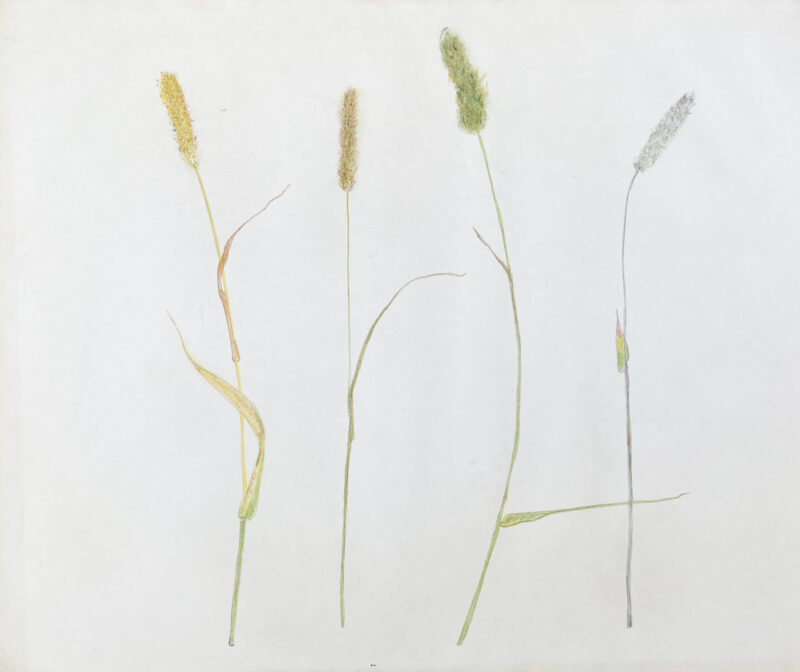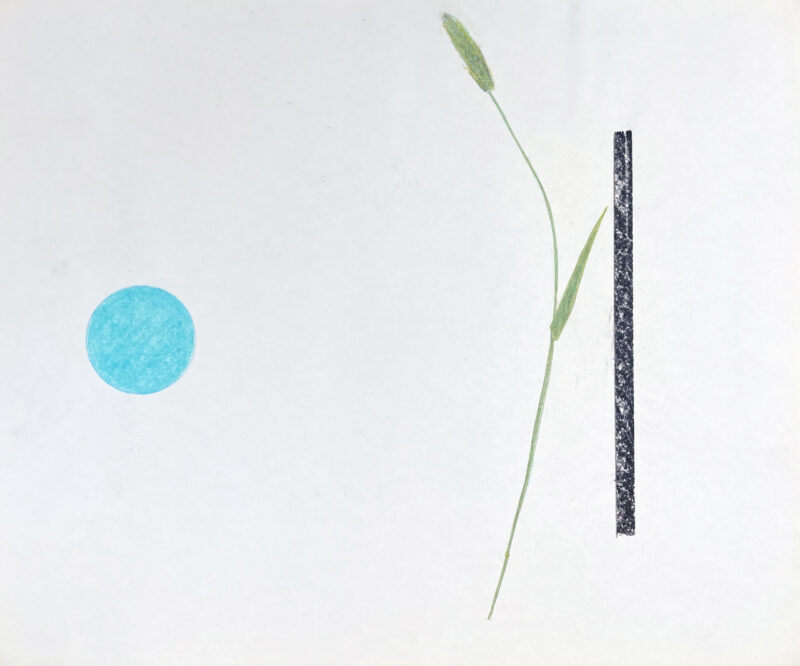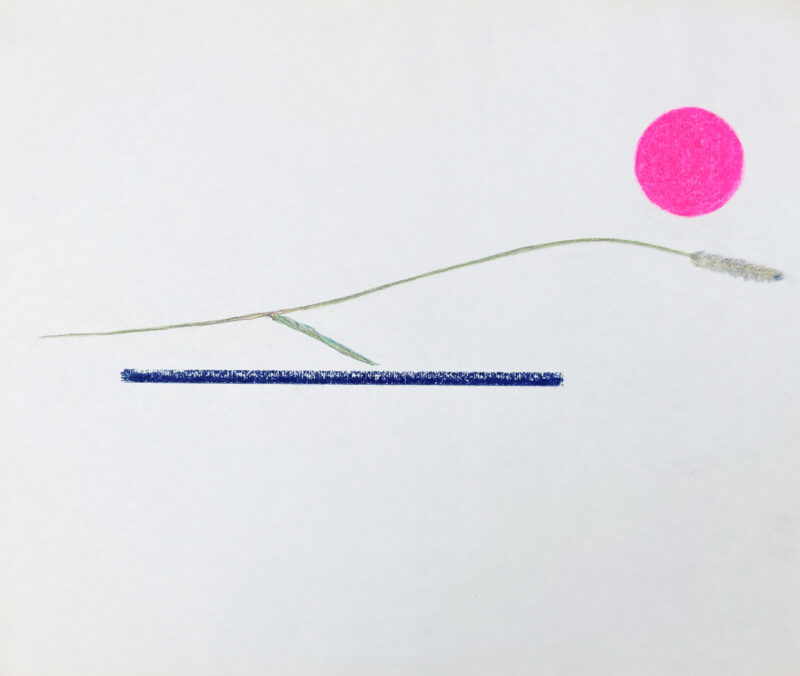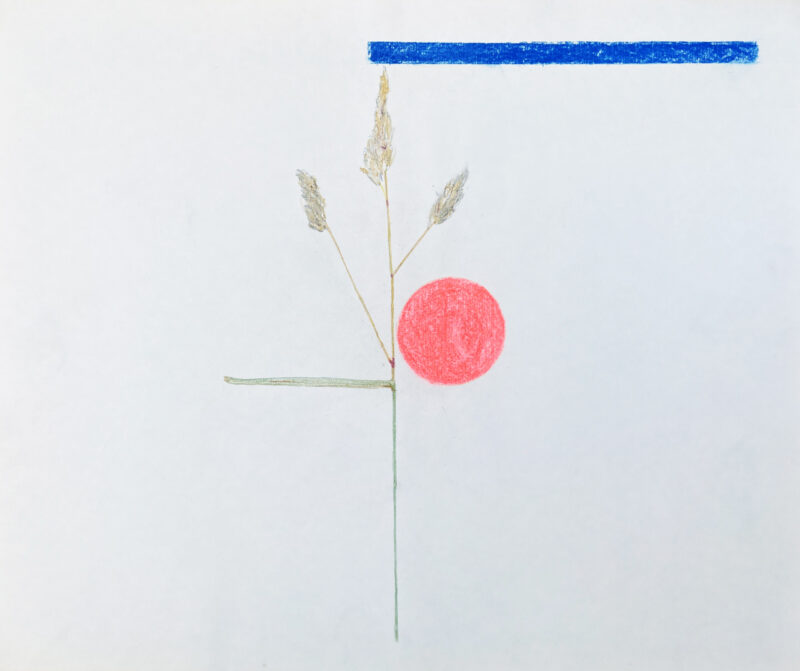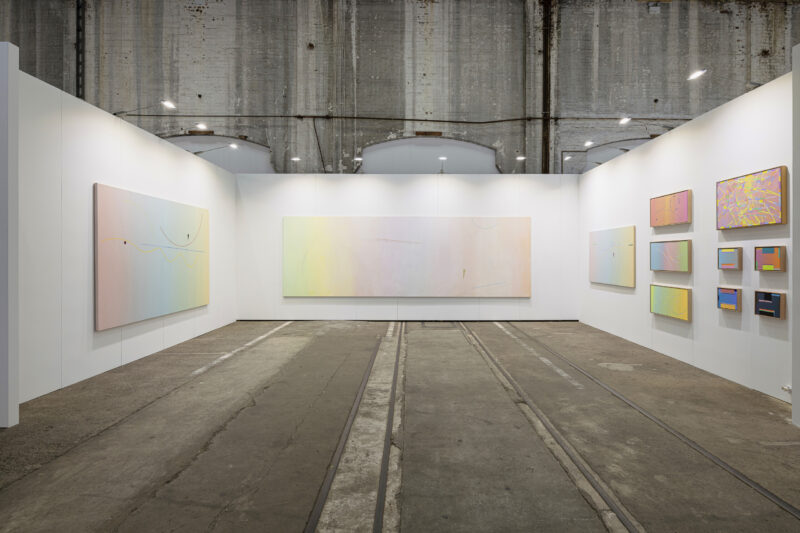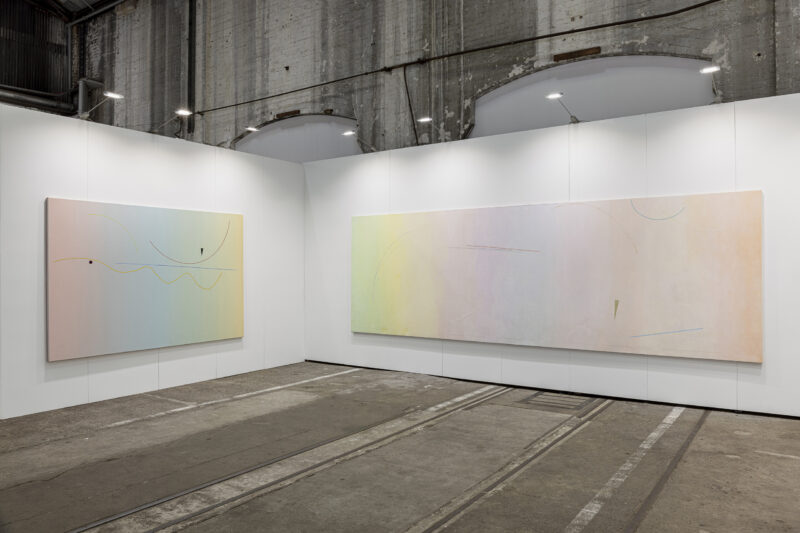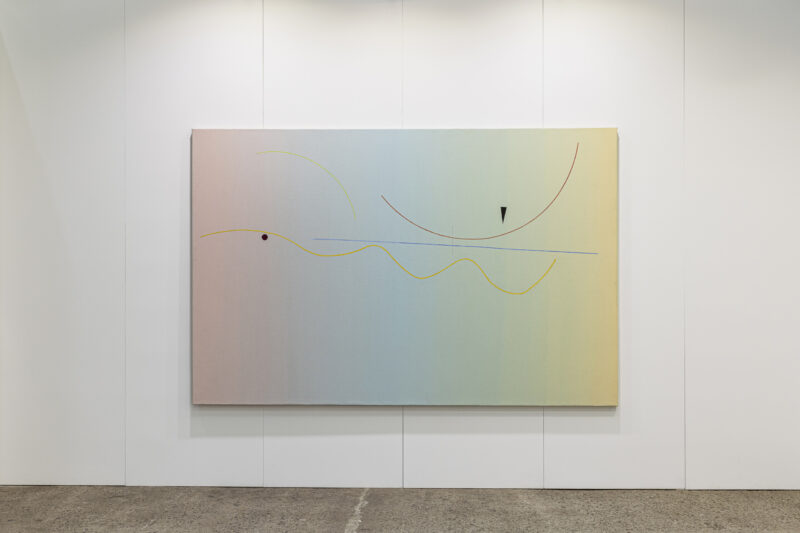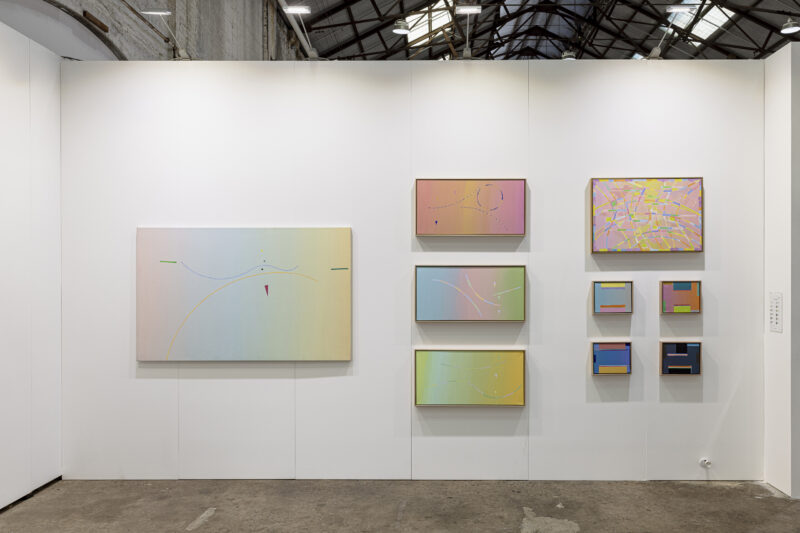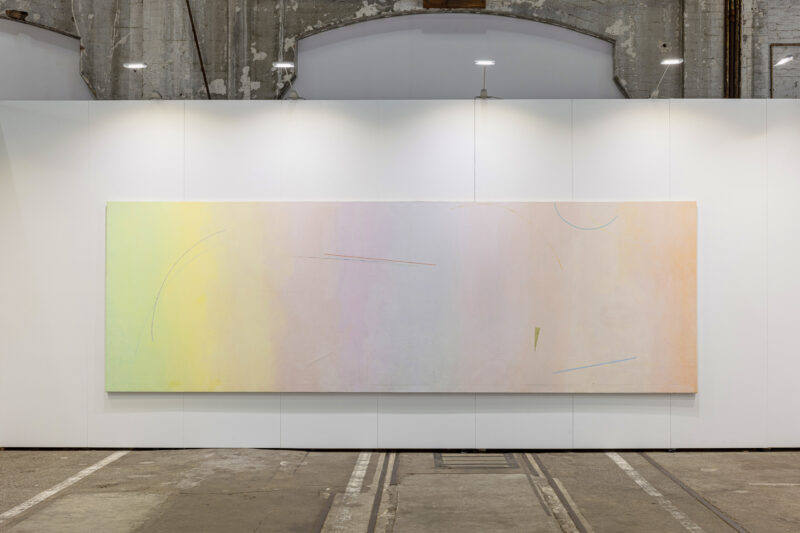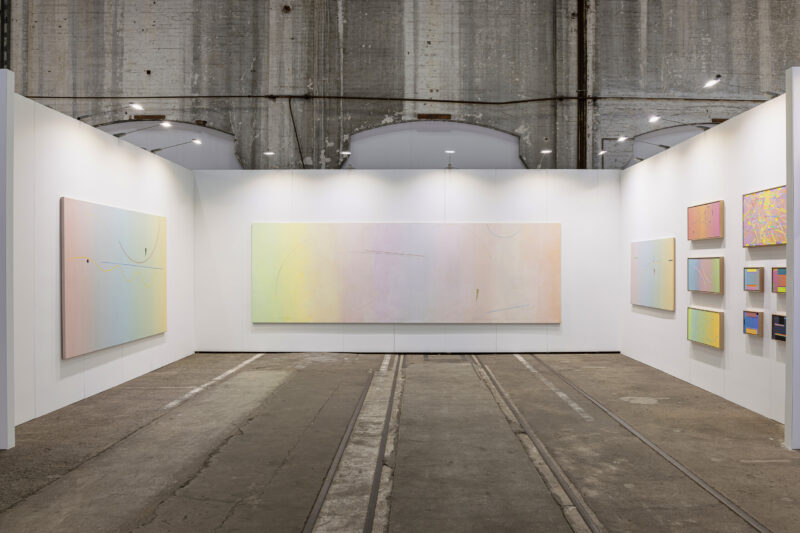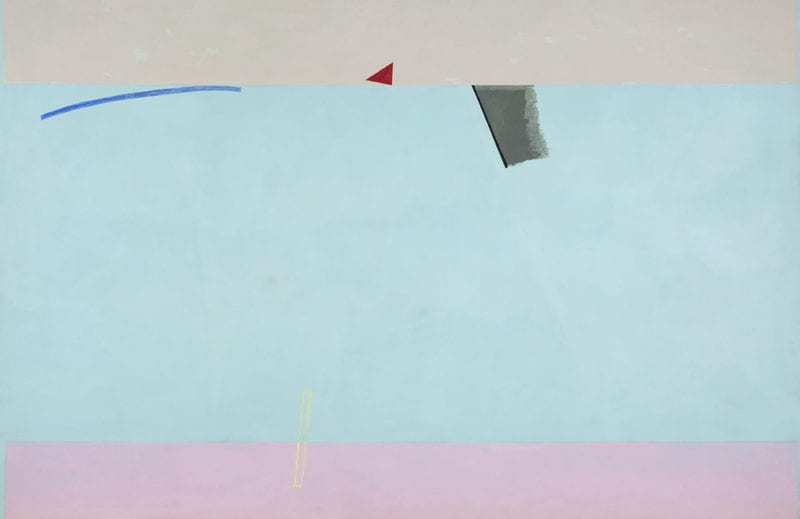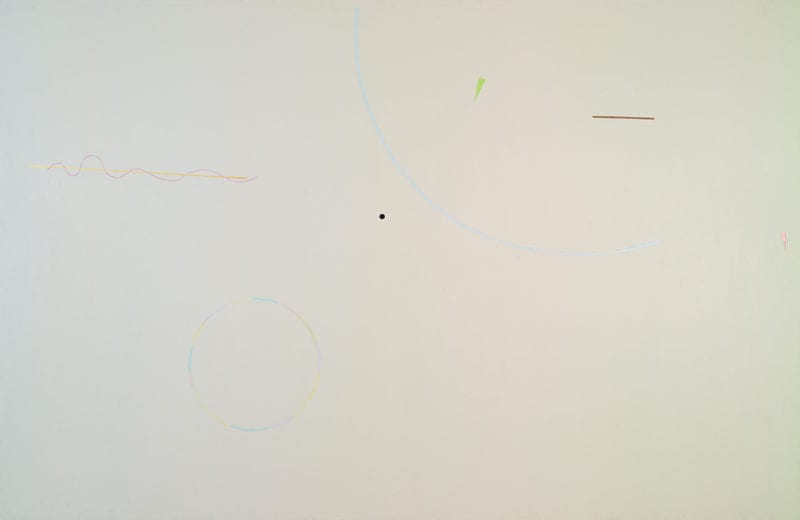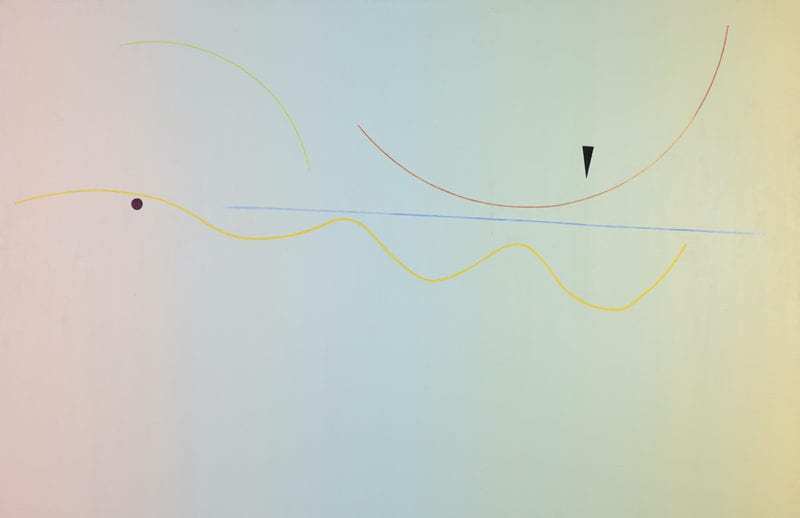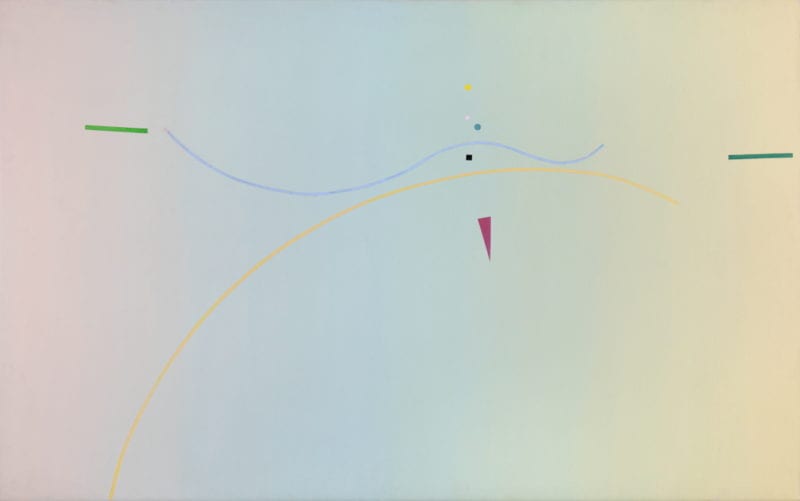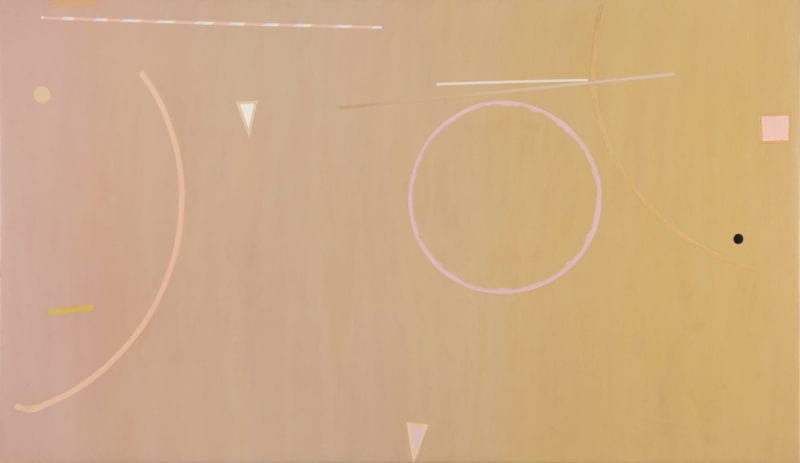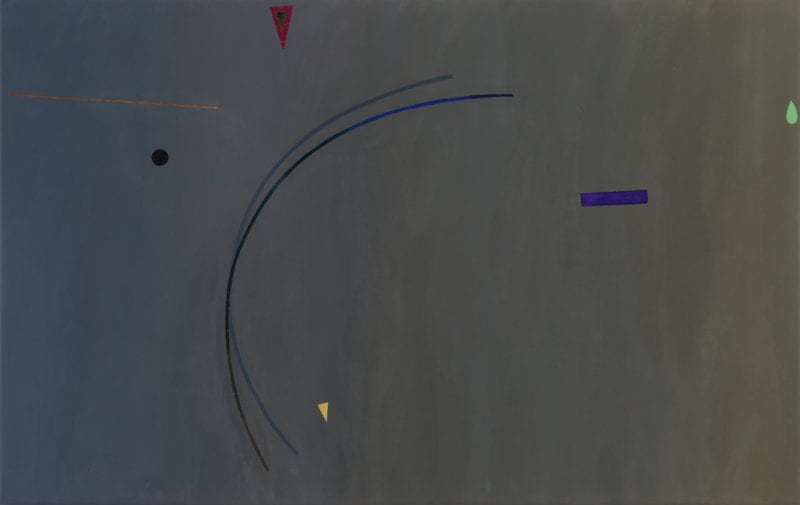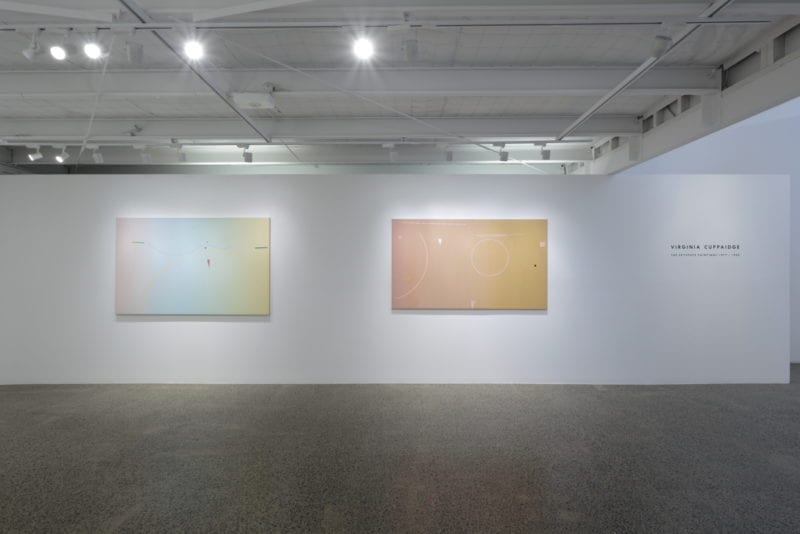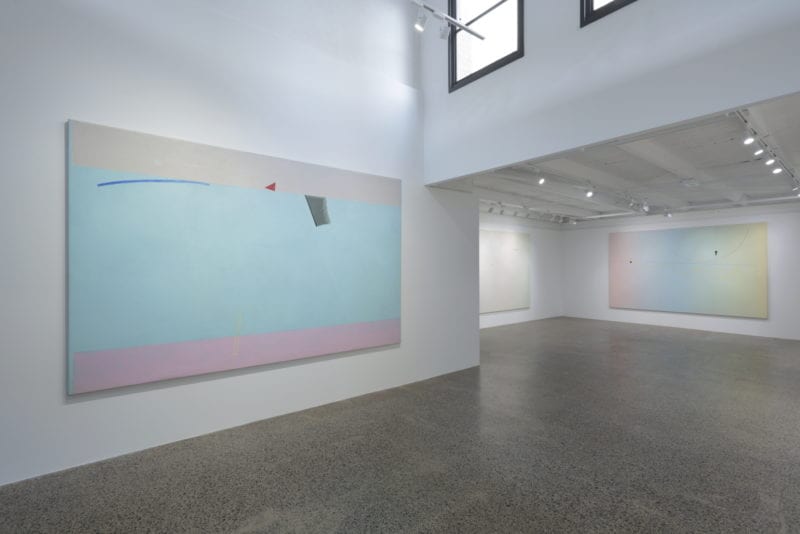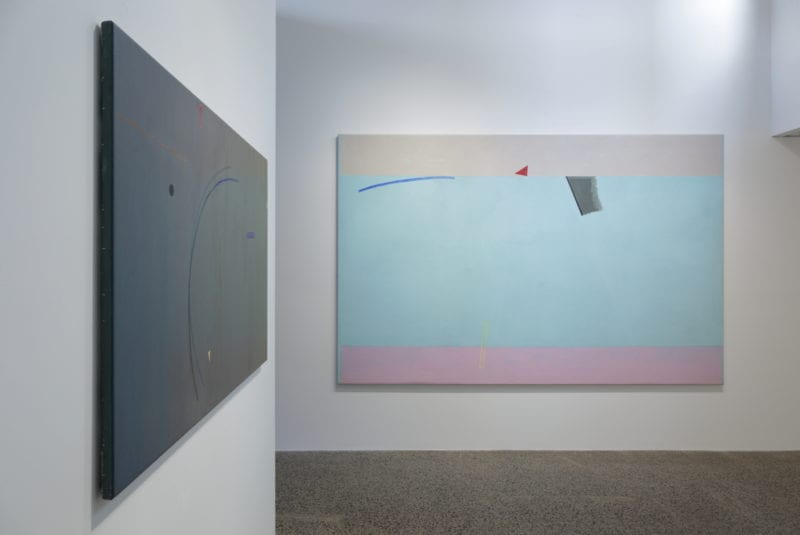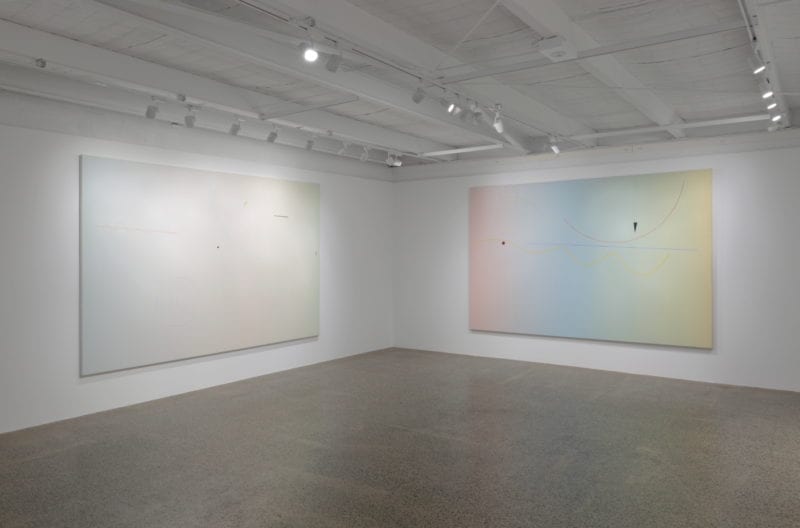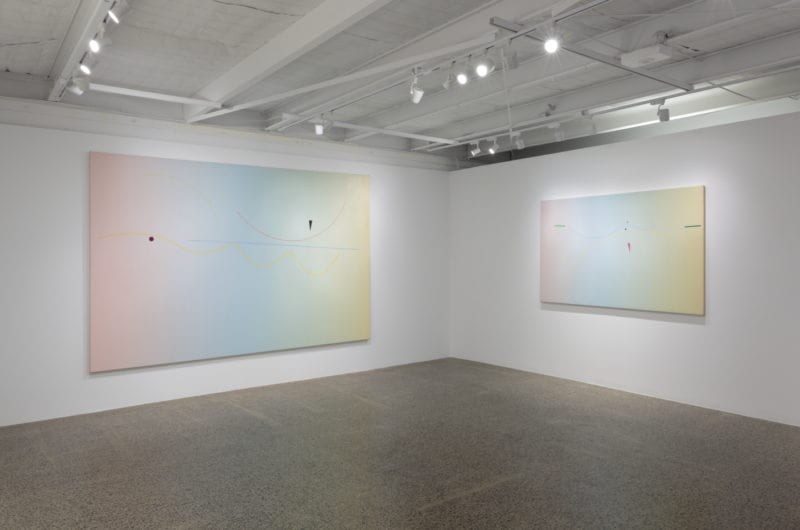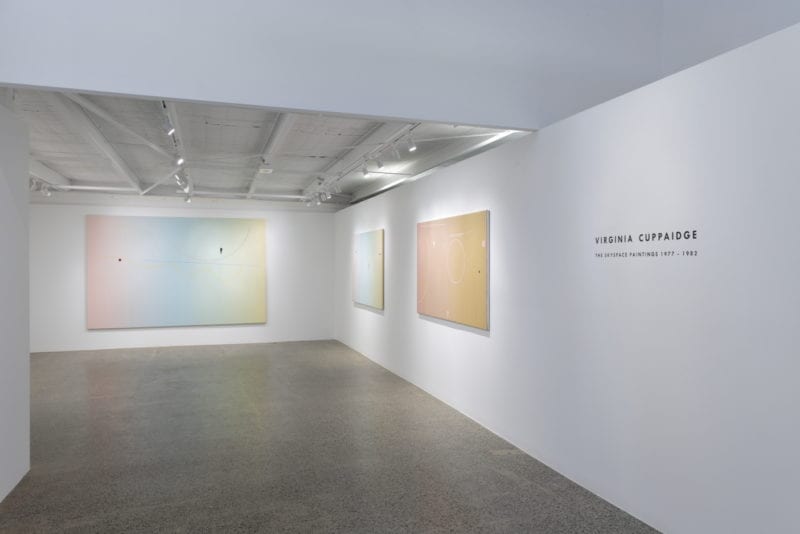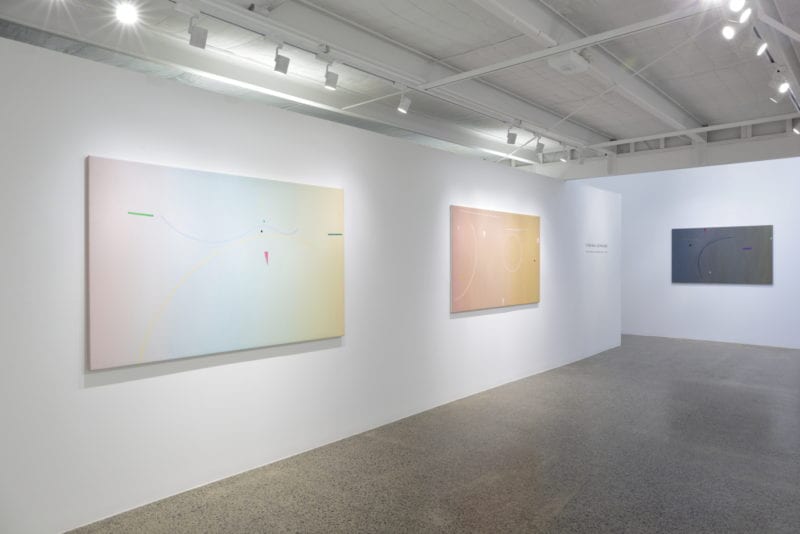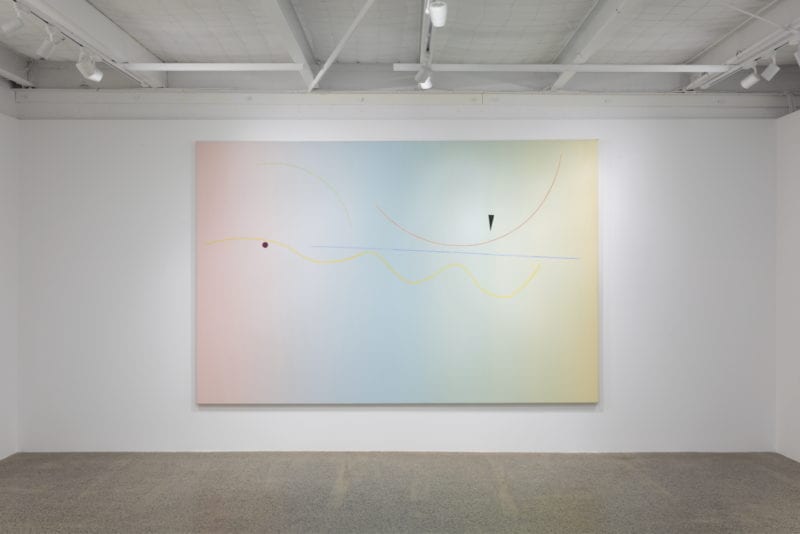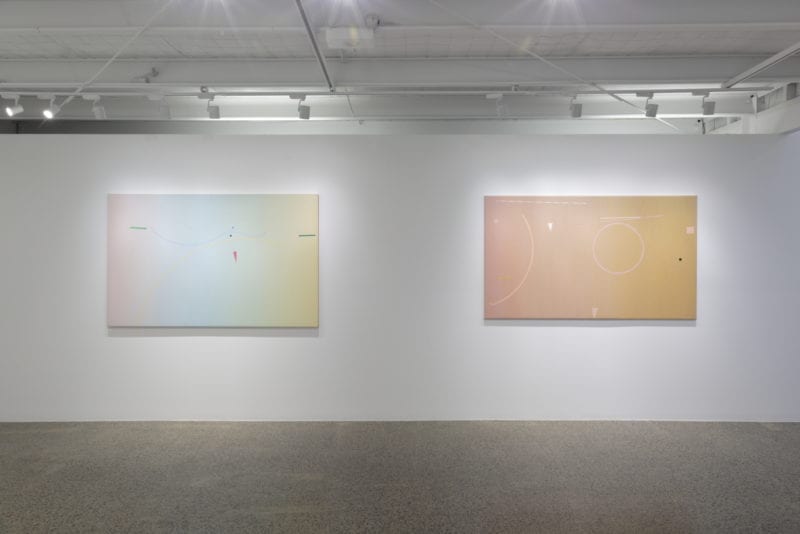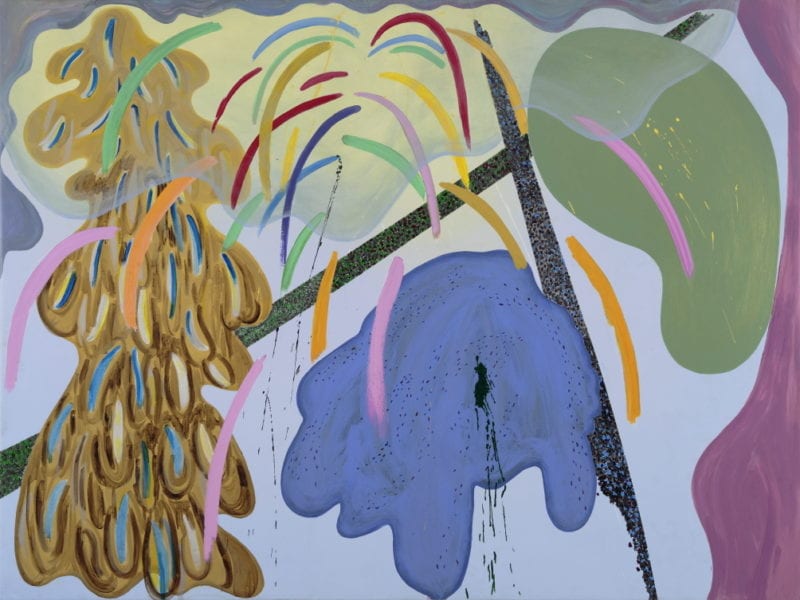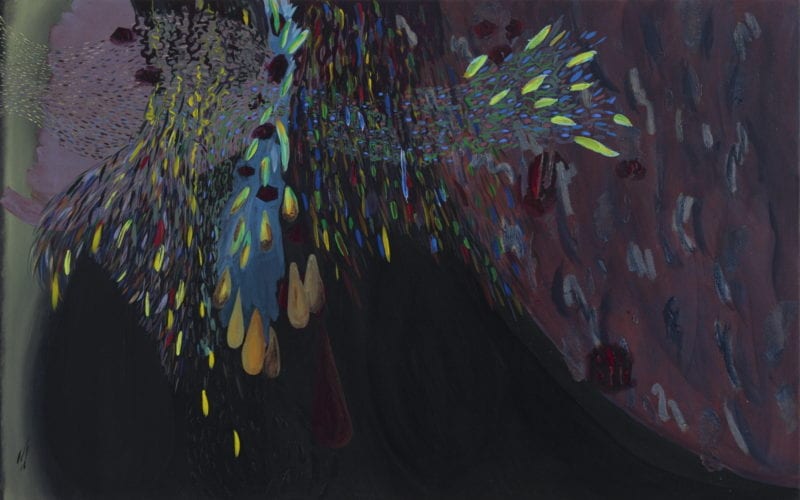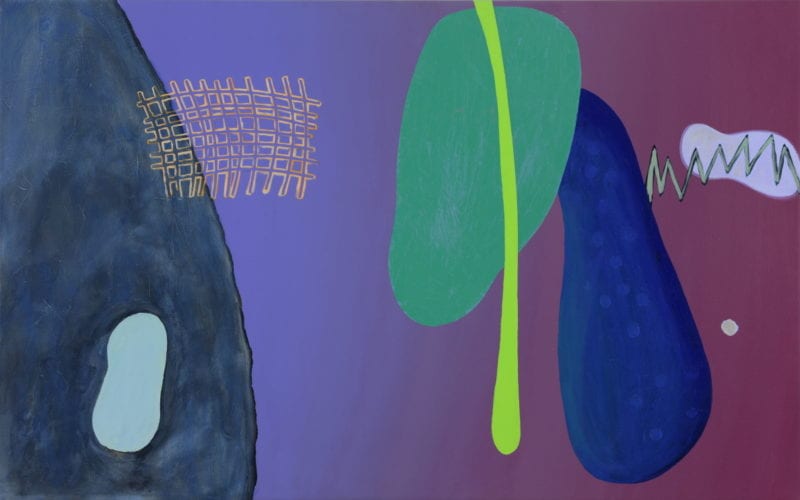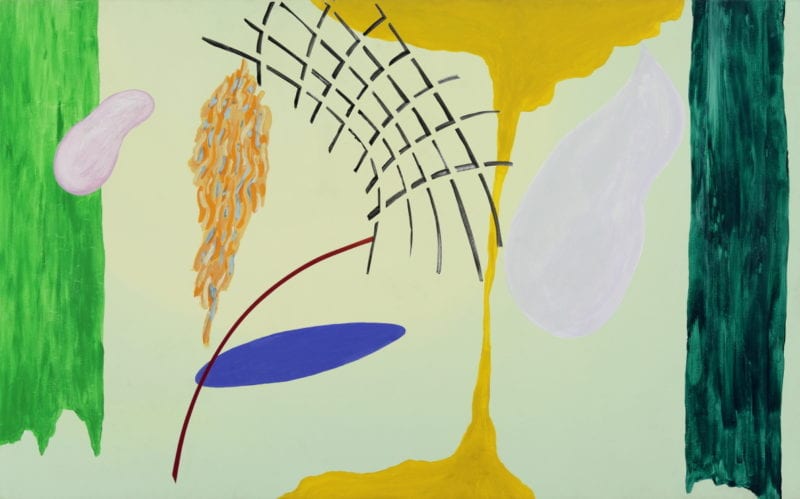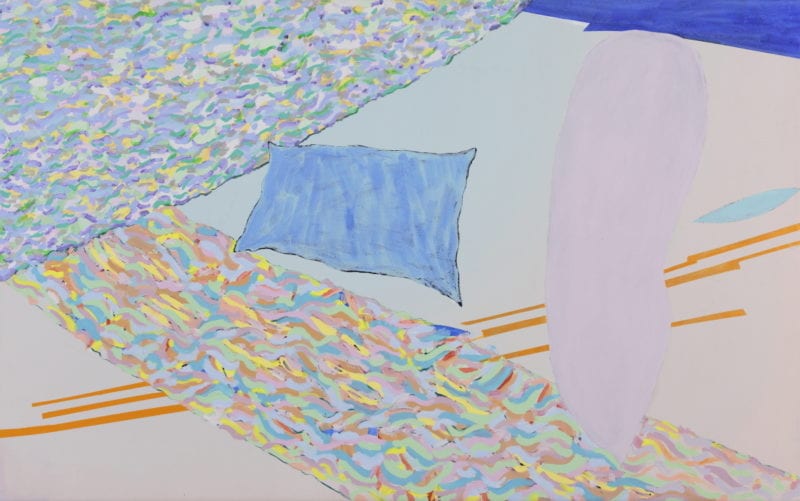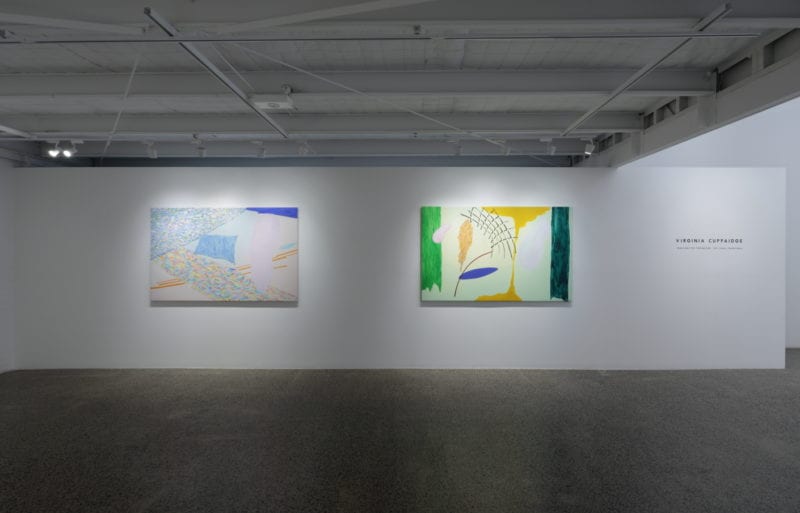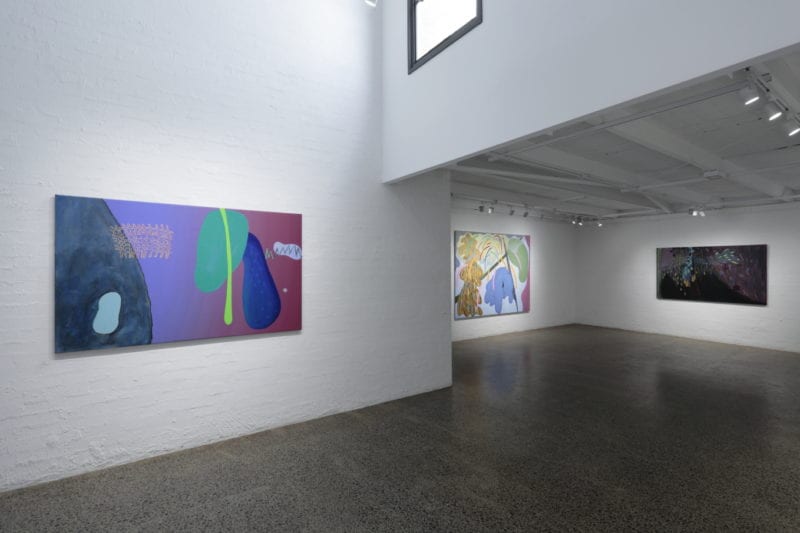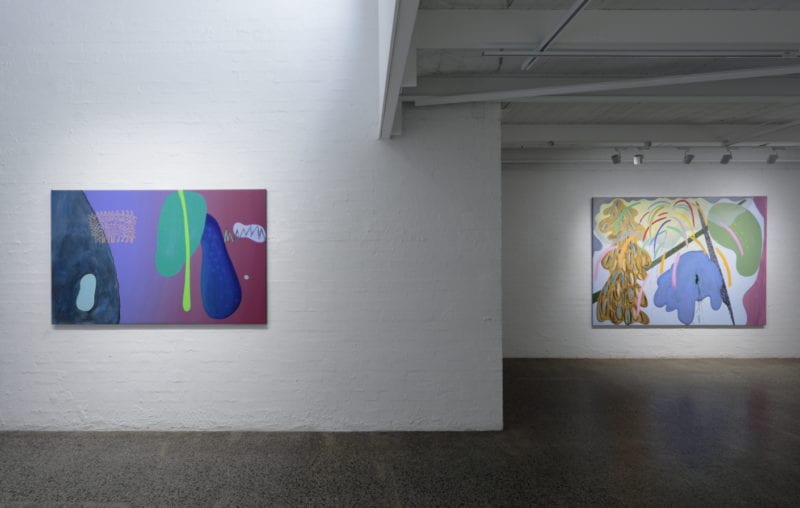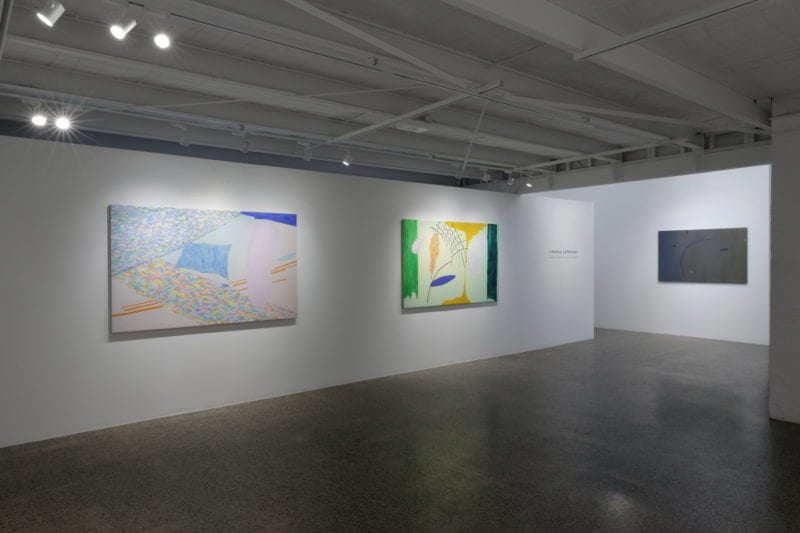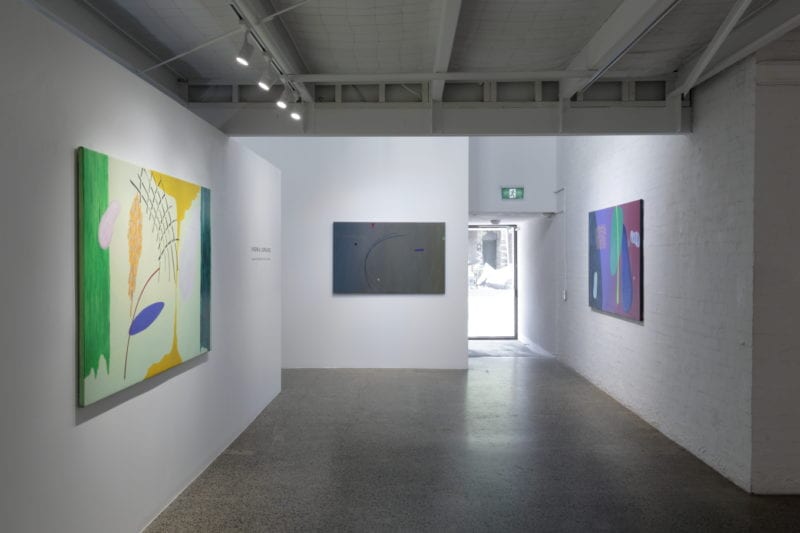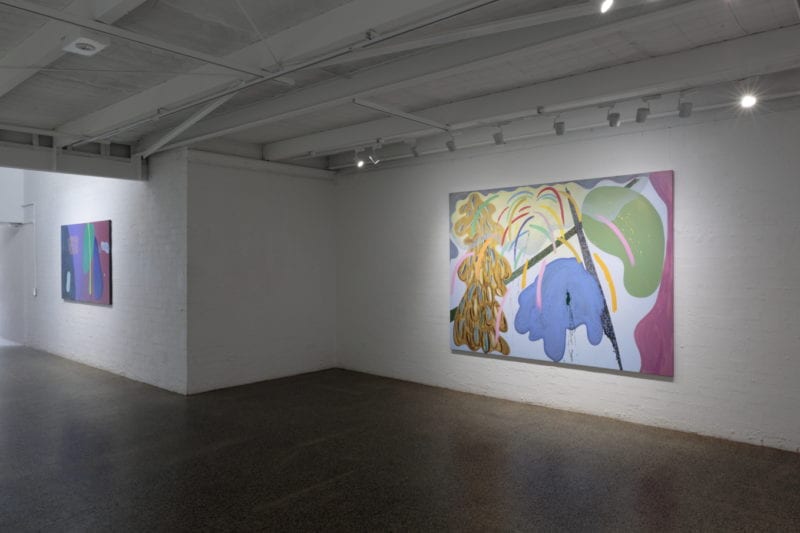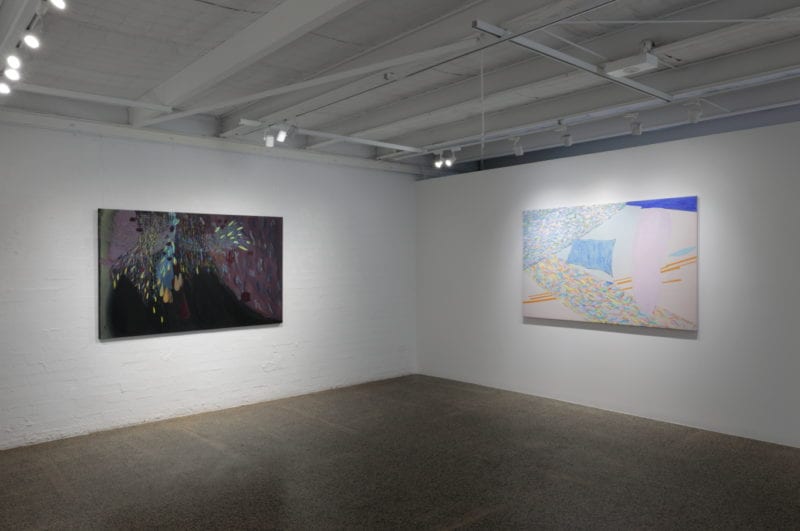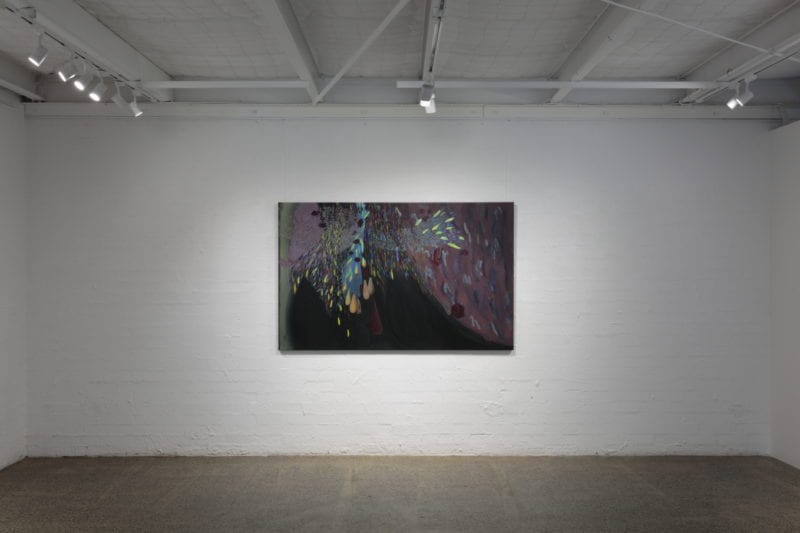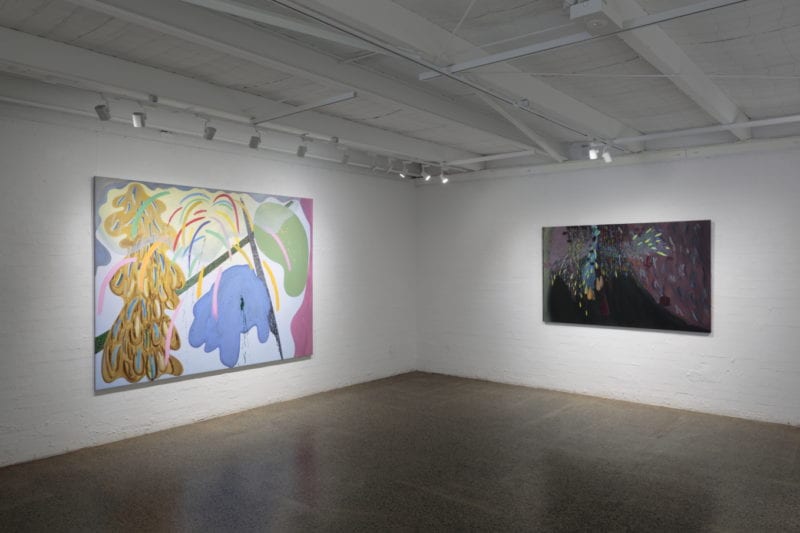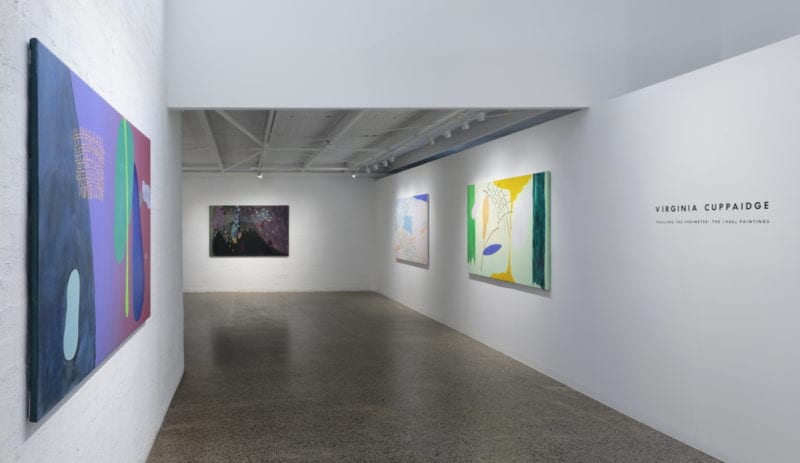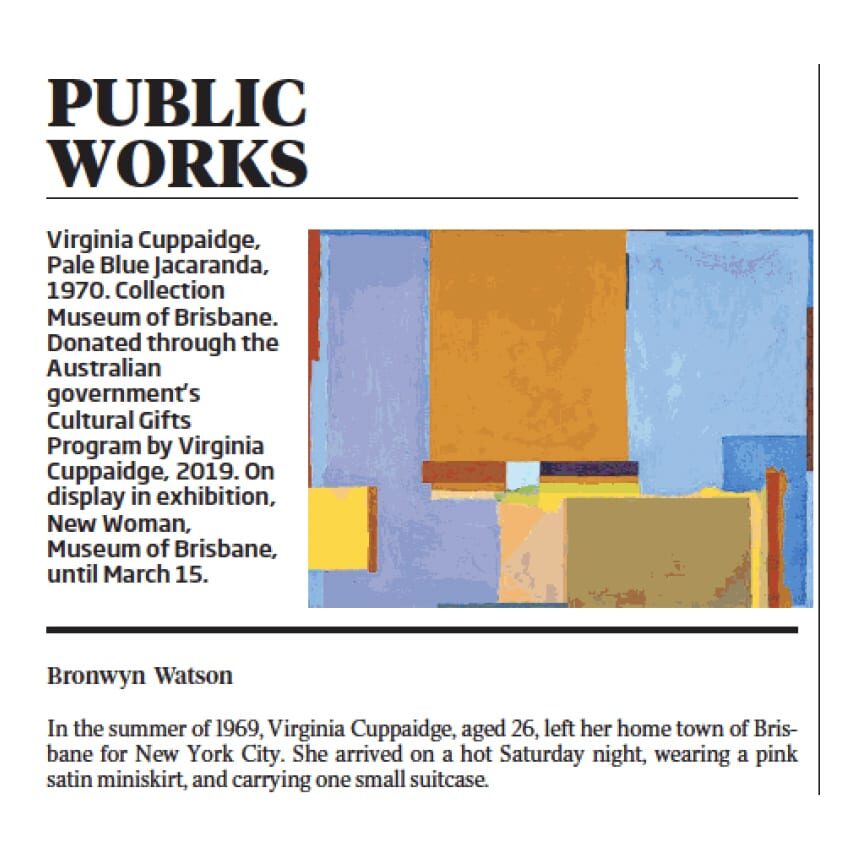VIRGINIA CUPPAIDGE
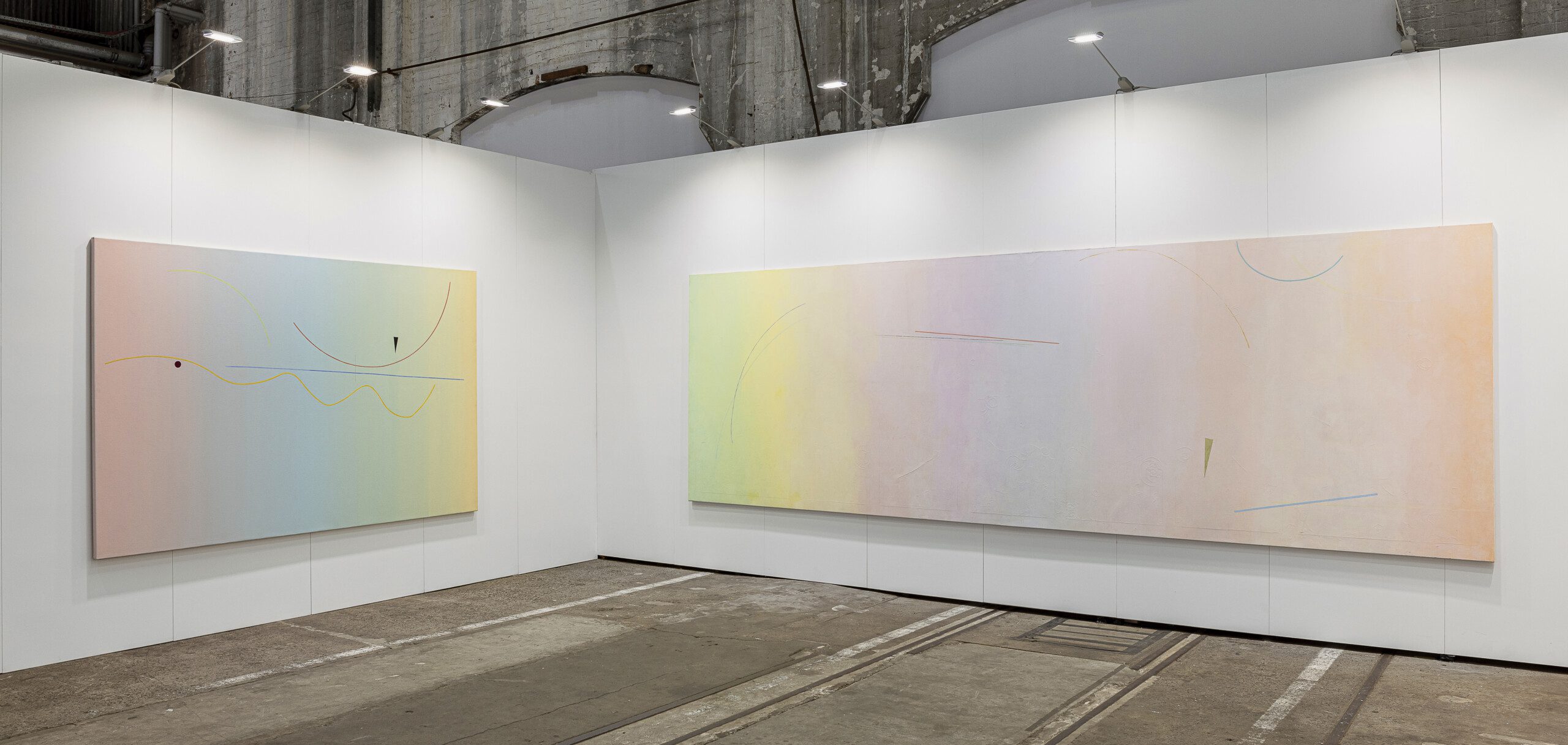
BIOGRAPHY
Virginia Cuppaidge has held thirty-three solo exhibitions since 1965 in Australia, USA and Canada. She studied drawing with Desiderious Orban (1963) and with John Olsen AO OBE, Marea Gazzard AO CBA and Robert Klippel at the Mary White School of Art and Design (1965-66), before relocating to New York in 1969. Cuppaidge held her first solo exhibition in New York in 1973 at AM Sachs Gallery. Cuppaidge is a recipient of a John Simon Guggenheim Foundation Award (1976), a MacDowell Colony Fellowship (1975), a C.A.P.S. New York State Award (1975) and Mural Workshop - National Academy New York (2005). Cuppaidge was Associate Professor of Art at City University of New York from 1992-2008.
Virginia Cuppaidge’s work has been included in significant group exhibitions including Women Choose Women, New York Cultural Centre (1973), Clemenger Triennial, National Gallery of Victoria (1996), Canadian Heritage Foundation (1998 touring four museums in Yukon Territory Canada) Seeing Jazz, Smithsonian Institute touring the USA (1999) and Abstraction: Celebrating Australian Women Abstract Artists, National Gallery of Australia touring (2017-18).
Virginia Cuppaidge’s work is represented in Australian collections including the National Gallery of Australia; National Gallery of Victoria; Art Gallery of New South Wales; Queensland Art Gallery/Gallery of Modern Art; Art Gallery of South Australia; Artbank; Museum of Contemporary Art, Sydney; Newcastle Art Gallery, NSW; Museum of Brisbane, QLD; Heide Museum of Modern Art, VIC; Tarrawarra Museum of Art, VIC; Power Institute, Sydney; Macquarie University NSW; Australian Catholic University; Sydney University Library; University of Wollongong Art Collection, NSW and St Vincent’s Hospital, Sydney. Her work is represented in international collections including the Australian Embassy, Australia Commonwealth Loan Collection, Washington DC, USA; Australian Consulate General, New York, USA; Hebrew Home at Riverdale, New York, USA; Jazz Museum in Harlem, New York, USA; Kingsborough Community College, Brooklyn, New York, USA and Neuberger Museum Purchase, New York, USA.
ARTIST CV
DOWNLOAD PDF
WORKS
CONTACT GALLERY FOR PRICE INFORMATION
PAST EXHIBITION
SYDNEY CONTEMPORARY
Making art since childhood, as a teenager Virginia Cuppaidge set her sights on travelling to New York City to see the Abstract Expressionist paintings of Jackson Pollock and Barnett Newman in person. In 1969 she touched down in New York with a suitcase and a pink mini skirt, and stepped straight into a 48-year love affair with the city that never sleeps.
“I bought a loft in an old block building on Grand Street in SoHo,” remembers Cuppaidge. “It wasn’t called SoHo then and when I arrived, it was just old factories and artists were living illegally in them. You had to get a certification from the Parks Department—ironically enough to say you were a certified artist—to show you needed the space to live and work in, which I did.”
After setting up her live-in studio, Cuppaidge took advantage of the huge expanses of wall space and began work on one of the many paintings she completed there, a six-metre painting called Cytheria, 1977. Her aim was to create a sense of calm to contrast the frenetic pace of New York. The effect she finally achieved was a gentle gradient of almost translucent colour, fading effortlessly from pale yellow to lilac and orange, so softly applied it appears cloud-like.
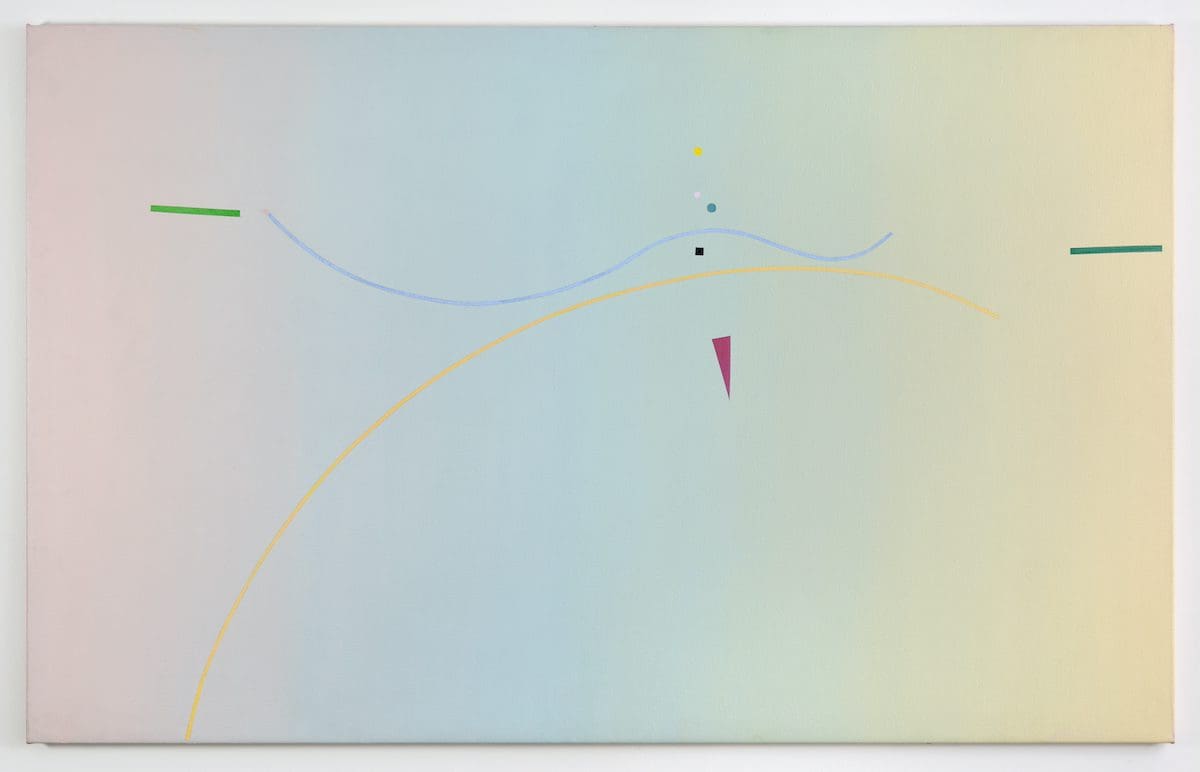
Virginia Cuppaidge, Vrinda, 1982, acrylic on canvas, 114 x 182 cm.
“At the time, I was very influenced by Minimalism and wanted to make tranquil paintings with undulating colour. I had no idea how I was going do it, so I just stretched the canvas and started experimenting. I mixed up lots of little pots of paint, changing colours as I moved across the surface with sponges and paint brushes. It took me months to work out and do properly.”
Once she began to paint, it was hard to stop. Cytheria marked the start of her Skyspace Series of paintings and from these early days in SoHo, Cuppaidge went on to exhibit over 30 solo exhibitions in New York, Canada and Australia. Her work has been praised by art critics Sister Wendy Beckett and Clement Greenberg, and she was an early member of the Guerilla Girls in New York, a group devoted to raising the public profile of women artists and addressing gender disparity in galleries and museums (Cuppaidge is also part of the Know My Name initiative at the National Gallery of Australia).
In 1992 she started work as associate professor of art at the City University of New York, a position she held until 2008. A Hill End Artist Residency near Bathurst brought Cuppaidge back to Australia in 2010, and it was during this time her love for the bush and unique light of the southern hemisphere resurfaced. She returned to Australia permanently in 2017, settling in Newcastle.
Before she left New York, Cuppaidge came back into possession of Cytheria. It had been over four decades since she had seen it last. Initially Cytheria was sold to an art collector in Pittsburgh who held it in their collection for many years before donating it to Kingsborough Community College in Brooklyn.

Dry cleaning of top of Cytheria using grated Mars Staedler® erasers, microfibre cloths and goat hair brushes. Photographed by Catherine Gill.
To Cuppaidge’s dismay, it had been hung in a cafeteria and sustained significant damage. Grease from food preparation had accumulated across its surface, graffiti appeared in various spots, and a large gash had been torn into the painting. Cuppaidge was asked to reclaim Cytheria and it remained in storage until an acquaintance suggested she contact the University of Melbourne’s Grimwade Centre for Cultural Materials Conservation to discuss restoration.
With the help of Melbourne gallerist Nicholas Thompson, Cuppaidge connected with Dr Nicole Tse, a senior lecturer in conservation studies at Grimwade, who agreed to take the painting as a project for students to work on while they studied. “Cytheria was a good challenge for students due to its size, but also because it was painted with acrylics,” says Tse. “Acrylic paint only started to be used in contemporary art practice around the mid-50s, so the cleaning of acrylic paintings presents a really topical challenge.”
The task of restoring Cytheria to its former glory took multiple groups of Grimwade students nearly two years. Preserving the luminous colours Cuppaidge had taken so long to achieve would prove to be a challenge, but with Cuppaidge back in Australia, she was able to meet with the conservation team and share vital information about her original intent. “Sometimes conservation is seen to be quite static,” Tse explains. “Working with the group collectively meant the process was much more activated and being able to talk to Virginia made it really meaningful.” Cuppaidge was thrilled with the result. “I visited Grimwade after they had cleaned a quarter of Cytheria, and it looked wonderful, like someone had shone a really bright light on it.”

Detail of aqueous cleaning. Photographed by Catherine Gill.
Approaching life in a similar way, Cuppaidge has brought her practice full circle from Australia to New York and back again. “I’ve done what I always wanted to do since I was a teenager, but you must be dedicated to it. You can’t do it lightly at all.”
Virginia Cuppaidge at Sydney Contemporary represented by Nicholas Thompson Gallery
Carriageworks (Sydney NSW)
7—10 September
Briony Downes The art of restoration with Virginia Cuppaidge
Art Guide, 5 September 2023
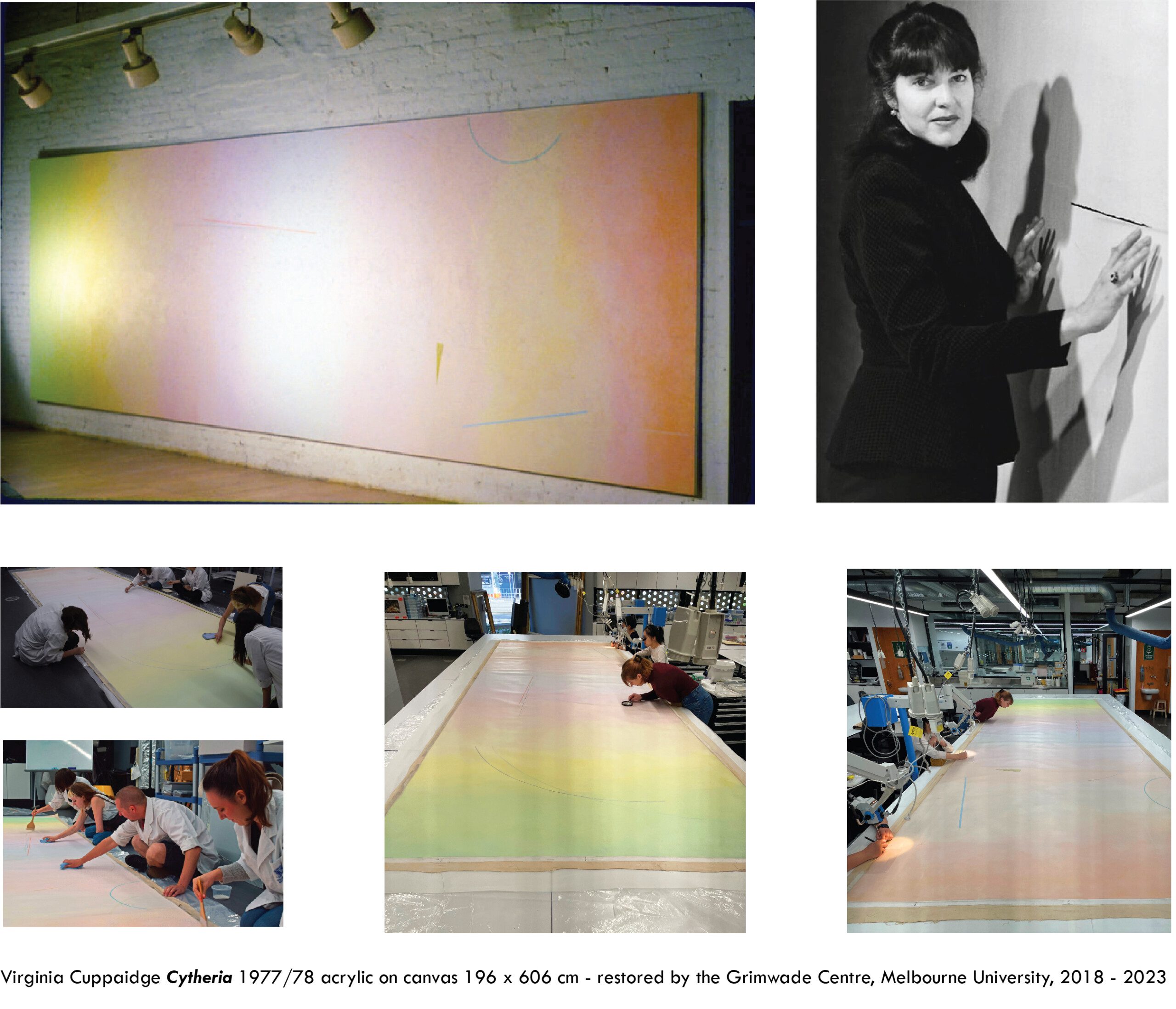

THE SKYSPACE PAINTINGS 1977 - 1982
26 FEBRUARY TO 15 MARCH 2020
EXHIBITION ESSAY
Paintings, like people, change over time, so it is always a fascinating exercise to unfurl canvases kept safely in storage for more than four decades and show them in a fresh light and in a different country to that in which they were conceived. Virginia Cuppaidge’s Skyspace series, from the late 1970s and early 1980s, embodies the opalescent Manhattan sky but is infused with memories of the bleached colours of the Australian landscape. Now, against the cool white of a Collingwood gallery’s walls, they acquire a retrospective aura that permits a new view, across time and place, allowing us to reflect on this short but pivotal phase of Cuppaidge’s work.
The earliest work in the exhibition, Sapphire, 1977, represents a transition from Cuppaidge’s first series painted in New York: the Geometrics. Begun in 1970, and inspired initially by Manhattan’s ‘looming skyscrapers on the dark avenues’, the Geometrics are large horizontal abstract compositions framed along the top and bottom with two rectangles of contrasting or unexpected colours (turquoise and yellow, maroon and blue, or – in the case of Sapphire – pale salmon and candy pink).[1] The rectangles are tautly separated by an in-between zone, often loosely brushed in, akin to a breath or to the air between two hands held one above the other without touching.[2] Both the large slabs of colour and the careful attention to painterly process reflect the sort of work Cuppaidge responded to at the time: Brice Marden’s minimalist canvases, Mark Rothko’s soft-edged forms and Hans Hofmann’s rigorously structured blocks of intense colour.
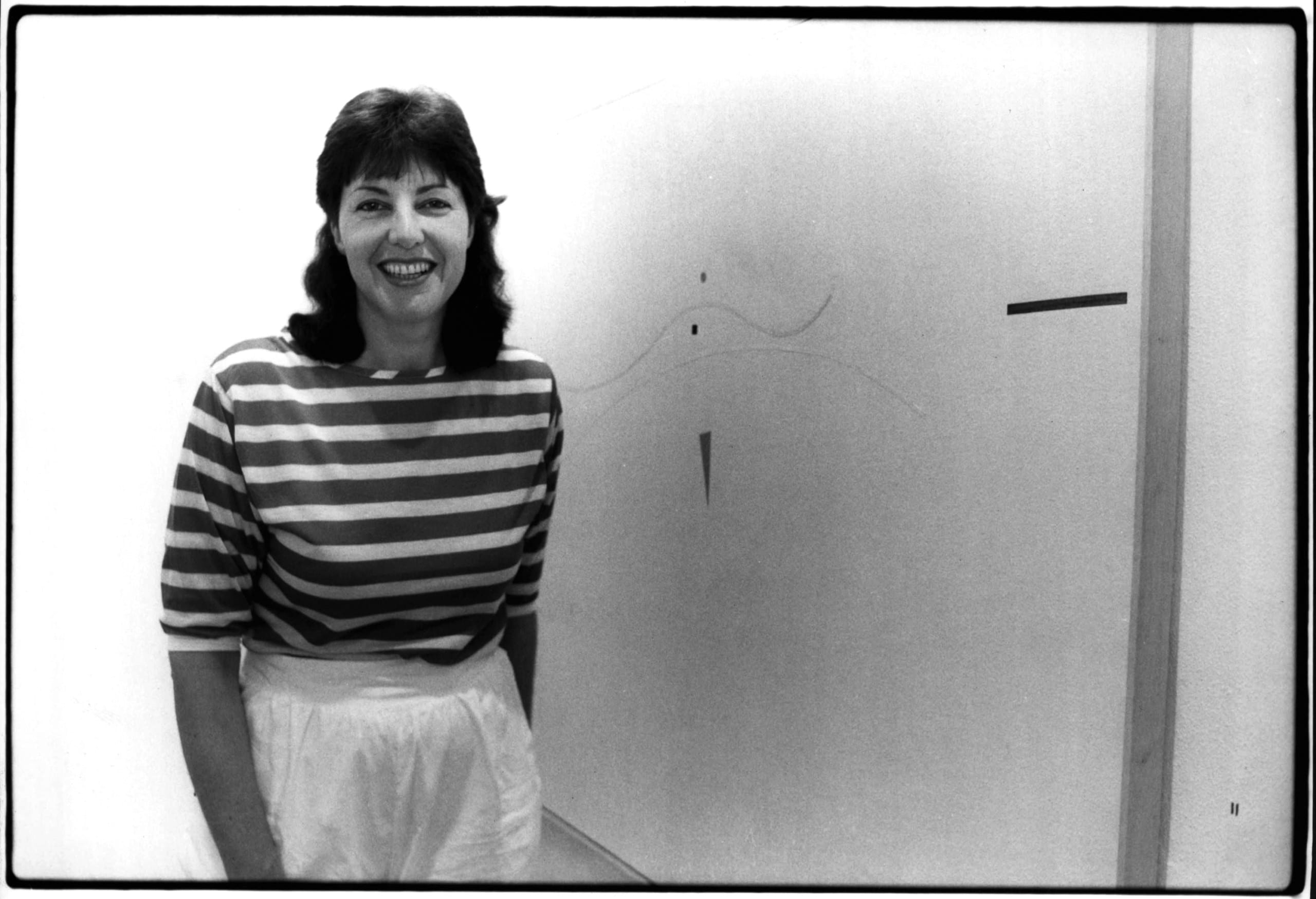

Virginia Cuppaidge with 'Vrinda'. Exhibition at Gallery A, Sydney. March 26, 1982. (Photo by Philip Wayne Lock/Fairfax Media).
The Geometrics also reflect an unexpected sculptural sensibility. Colour has not only an emotional character but also a certain weight in these works; forms are balanced or juxtaposed like so many horizontal steel girders. Of course, given that Cuppaidge was living with Clement Meadmore at the time, the subject of sculpture was ever-present. She also befriended many other contemporary sculptors while working at Max Hutchinson’s gallery, Sculpture Now, at 127 Greene Street, SoHo. In such a fertile creative atmosphere it is understandable that this sculptural feeling should manifest in Cuppaidge’s painting.
Three events in 1975–76 sparked the second New York series that came to be known as the Skyspace paintings. The first was a month-long MacDowell Colony Fellowship, in the woods of New Hampshire, during which Cuppaidge produced five paintings as well as some crayon drawings of wild grass stems. In the process, she realised the importance of the space in between the grass stems – so much so that ‘the background surface came forward and became the sky’.[3] This in turn prompted the desire to explore ‘an expanse of light opening the surface’.[4] A Guggenheim Foundation Grant, in 1976, enabled her to follow this new direction and focus entirely on her painting for a year without the distractions of gallery work or teaching. And in the same year she purchased a SoHo loft, on the top floor of 66 Grand Street – ‘a narrow but entirely busy street conducting traffic from the Holland Tunnel on the west side of Manhattan to the Williamsburg Bridge’.[5] Living in an area she describes as ‘grimy and noisy’, she ‘decided quiet and tranquil where I lived was essential’.[6]
The Skyspace paintings embody these qualities of quietness and tranquility. The central zone of the Geometrics paintings has expanded to occlude the heavy rectangular bars so that the entire canvas is now airy and suffused with light. Gone too are the areas of loose brushwork; in their place are layers of smooth paint applied slowly and laboriously with a sponge, each layer allowed to fully dry before another layer of a different colour is laid over it, with anywhere up to forty layers contributing to the luminous surface. Tonally close colours are blended to create an undulating field of colour, evocative of the sky at different times of the day: whether ‘the dawn sky over Manhattan, with the quiet before the noise of the morning traffic on Canal Street’, as in Grand Street Dawn, or the fleeting glow of dusk, as in Darkon (Cuppaidge’s personal childhood term for sunset).
Juxtaposed against these fields of blended colour are delicate arcs, rods, triangles and dots of colour, painted by hand or drawn or collaged onto the canvas in black, acidic greens and vivid primaries. There is a playful, acrobatic sense in the way Cuppaidge conjures these forms with precision and calculated risk. They too evince a sculptural awareness of balance. Their painterly antecedents may lie with Miro but they also respond to the airiness of an Alexander Calder mobile or a Kenneth Snelson tensile construction, hovering and extending in space.
Their titles are personal, eclectic and sometimes romantic. Lilika is a Hawaiian word meaning ‘going softly’, which seems to describe the all-over softness of the undulating pastel background, punctuated by an intense small black dot. Vrinda, a feminine name, was chosen from a baby name book and means ‘cluster of flowers; virtue and strength’; the choice reflecting Cuppaidge’s involvement in the feminist movement in New York in the early seventies. Black, White and Beige is her riff on jazz great Duke Ellington’s three-part Black, Brown and Beige, 1943, which charted the history of African Americans (Cuppaidge saw Ellington perform on a number of occasions). It also draws attention to the notoriously difficult neutral and achromatic palette, which Cuppaidge usually advises novice painters to avoid.[7]
Cuppaidge’s Skyspace paintings are at once emotionally charged and romantic yet as tautly balanced as steel constructions. Conceived and created in New York, and now repatriated to Australia, they represent a visionary experiment in minimalism infused with romanticism and painting steeped in sculpture.
Jane Eckett
University of Melbourne
[1] Cuppaidge quoted in Sarah Johnson, Virginia Cuppaidge: The Nature of Abstraction, Newcastle Art Gallery, 11 May – 21 July 2019, p. [3].
[2] Virginia Cuppaidge in Geoffrey De Groen, Conversations with Australian Artists, Melbourne: Quartet, 1978, pp. 93-95.
[3] Conversation with the artist, 1 January 2020.
[4] Cuppaidge in Johnson, op. cit., p. [3].
[5] Cuppaidge artist statement on the Skyspace series, supplied to Nicholas Thompson, 4 October 2019.
[6] Ibid.
[7] Conversation with the artist, 1 January 2020.
OPENING SPEECH
JASON SMITH, DIRECTOR & CEO OF GEELONG GALLERY
SATURDAY 29 FEBRUARY 2020, 4.20PM
TRAILING THE PERIMETER: THE 1980S PAINTINGS
28 NOVEMBER TO 1 DECEMBER 2018
EXHIBITION ESSAY
LETTING LOOSE
My first encounter with the abstract painting of Virginia Cuppaidge was the unfurling of a three-metre wide canvas titled Lyon in the collection of the National Gallery of Australia. We wanted to include it in a forthcoming display about abstraction, but first it needed to be stretched and considered, having spent much of its life in a New York storage facility before being sent ‘home’ by the artist. It was a revelation. Planes of soft colour partitioned by horizontal beams of more colour – not really a grid, but grid-like - the dissolving intersections of a cityscape that is trying to find open space. When I finally met Virginia on a muggy, close day in Sydney, I understood my initial reaction to the work when she explained to me that Lyon is from her first body of geometric abstractions painted in New York in 1972-73. They started life as a response to her immersion in one of the world’s most coveted concrete jungles, thus they were about the skyscrapers and the topography of streets that go on in a seemingly never-ending street map that is New York City. But then, Virginia’s subconscious started to seep through and an echo of the wide, open landscapes of Australia began to paint its way into the scene.
Virginia landed in New York in 1969 following a teenage dream to experience Abstract Expressionism first hand in the city of its birth. She arrived with one small suitcase and the phone number of Australian sculptor Clement Meadmore. The city was overwhelming to the young Brisbane-born artist, daughter of a botanical painter, educated in the cosseted surrounds of Frensham Girls’ School in Mittagong. By day two in New York, walking in a straight line to avoid getting lost, she covered ten blocks to find a working telephone, and when she did, she called Clem. Thus, began one of Australian art history’s great love stories set in Manhattan. Meadmore would name his monumental Corten steel sculpture that now rests in the NGA Sculpture Garden on the shores of Lake Burley Griffin after her, and she named Lyon in his honour (Lyon being Meadmore’s middle name).
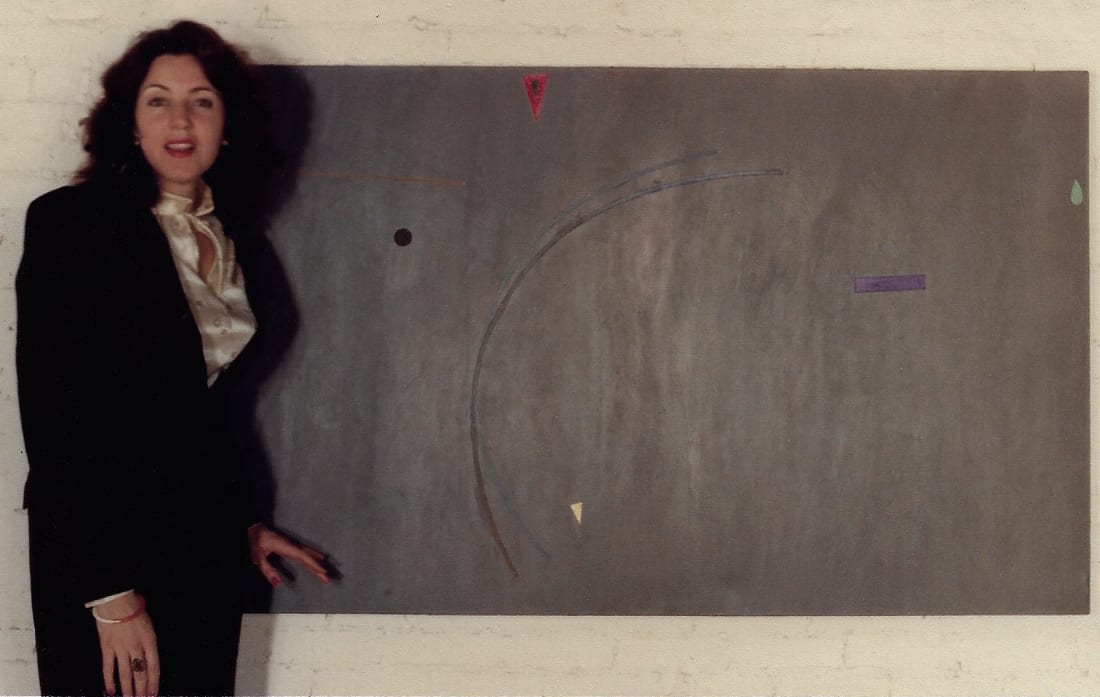

Virginia Cuppaidge with Darkon, SoHo NYC 1980 (artist's archive)
The 1970s and 1980s were a time of great transition in New York and Virginia’s work evolved with the times. Trailing the Perimeter, the title of this exhibition, is an exploration of the work she produced there in the post-modernist decade of the 1980s. It was a time of great plurality and momentous shifts in the political landscape. It was the end of the Cold War, replaced by the concepts of Perestroika and Glasnost, symbolised by the fall of the Berlin Wall. On the streets of New York, Electro funk music and the early strains of Hip Hop were emerging out of the Jazz scene, which had been the predominant soundtrack to Meadmore and Cuppaidge’s life there. Tom Wolfe was writing Bonfire of the Vanities; Oliver Stone was directing Michael Douglas in his career-defining role as Gordon Gekko in Wall Street. Everywhere, interior designers were blasting plaster walls in apartments to make way for exposed bricks and playful Memphis Milano gelato-coloured angular furniture and Alessi kitchenware. Once the precinct of artist studios and lofts, SoHo was becoming gentrified with galleries popping up alongside fashion boutiques.
A marked departure can be observed in Virginia’s work of the 1980s – perhaps a response to the vast cultural and political changes afoot in the world at the time. The picture plane begins to loosen up and her lines, shapes and forms now float in space, no longer anchored to the surface. The palette softens, with the occasional lurid break out. Amoeba-like shapes dance across the canvas, or a gentle line arcs and curls through a grainy, sfumato colour field. But always, through her evolution, her constant friends – nature, light and colour remain steadfast. As critic, Corinne Robins observed in her catalogue essay for the artist’s 1986 exhibition at Stephen Rosenberg Gallery in SoHo; ‘The viewer…is convinced that Cuppaidge has caught for us, depicts before our eyes the process, the mid-point between ebb and flow, of organic change’. Life Wave (1986), one of the key works in the exhibition is a great summation of this new sensibility emerging in her work of this decade. Soul Search (1984) reflects Virginia’s seeking of new ways of looking and being. But, if ever there was a work to place in one’s SoHo loft beside the perfect Ettore Sottsass Carlton bookcase (1981), it would be Vrinda (1982). Thus, there is an inevitable nostalgia to the works in Trailing the Perimeter. For this curator, who is trying to be detached and reasoned, I give in and allow myself to be swept back by the power of the work to my formative taffeta-clad hey days of the 1980s when the world turned decidedly post-modern.
Lara Nicholls
Canberra, November 2018
OPENING SPEECH
DR GERARD VAUGHAN AM
SATURDAY 1 DECEMBER 2018, 5PM
NEWS
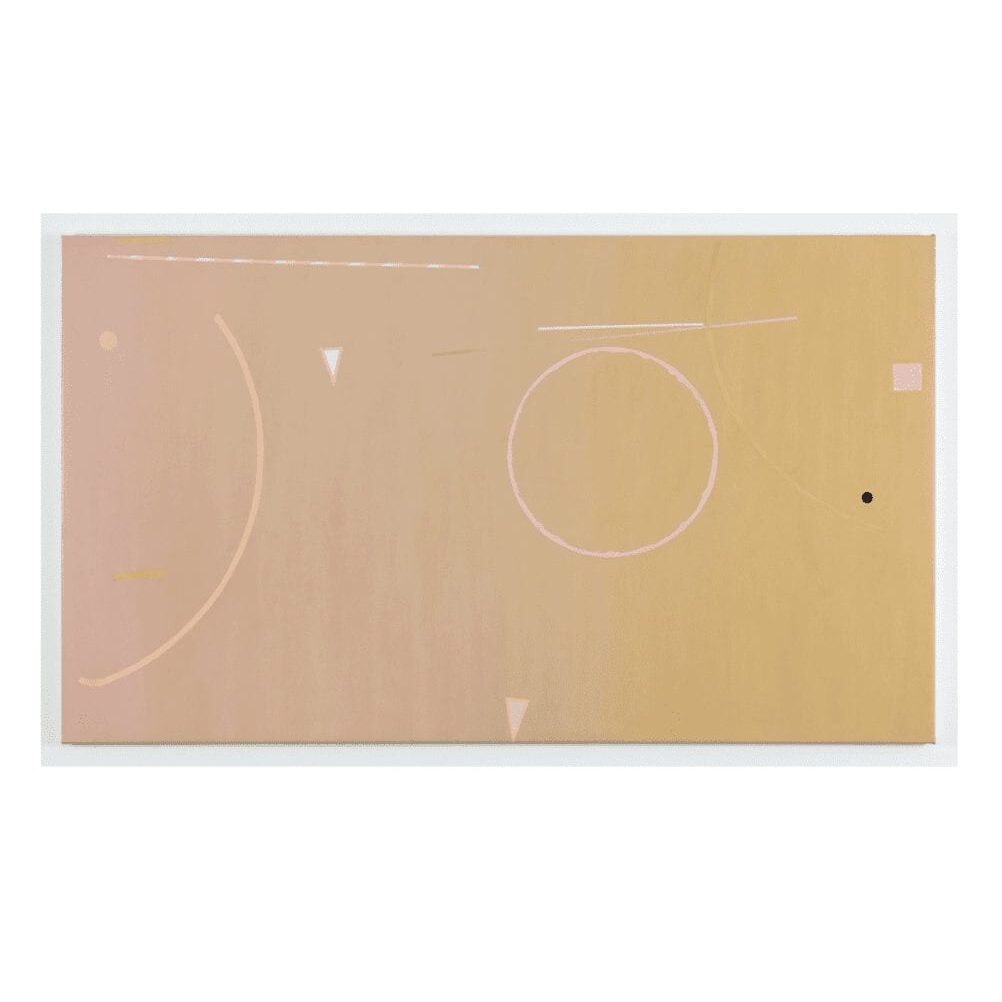
VIRGINIA CUPPAIDGE’S ‘BLACK, WHITE AND BEIGE’ 1980 RESTORED BY THE UNIVERSITY OF MELBOURNE’S GRIMWADE CONSERVATION SERVICES
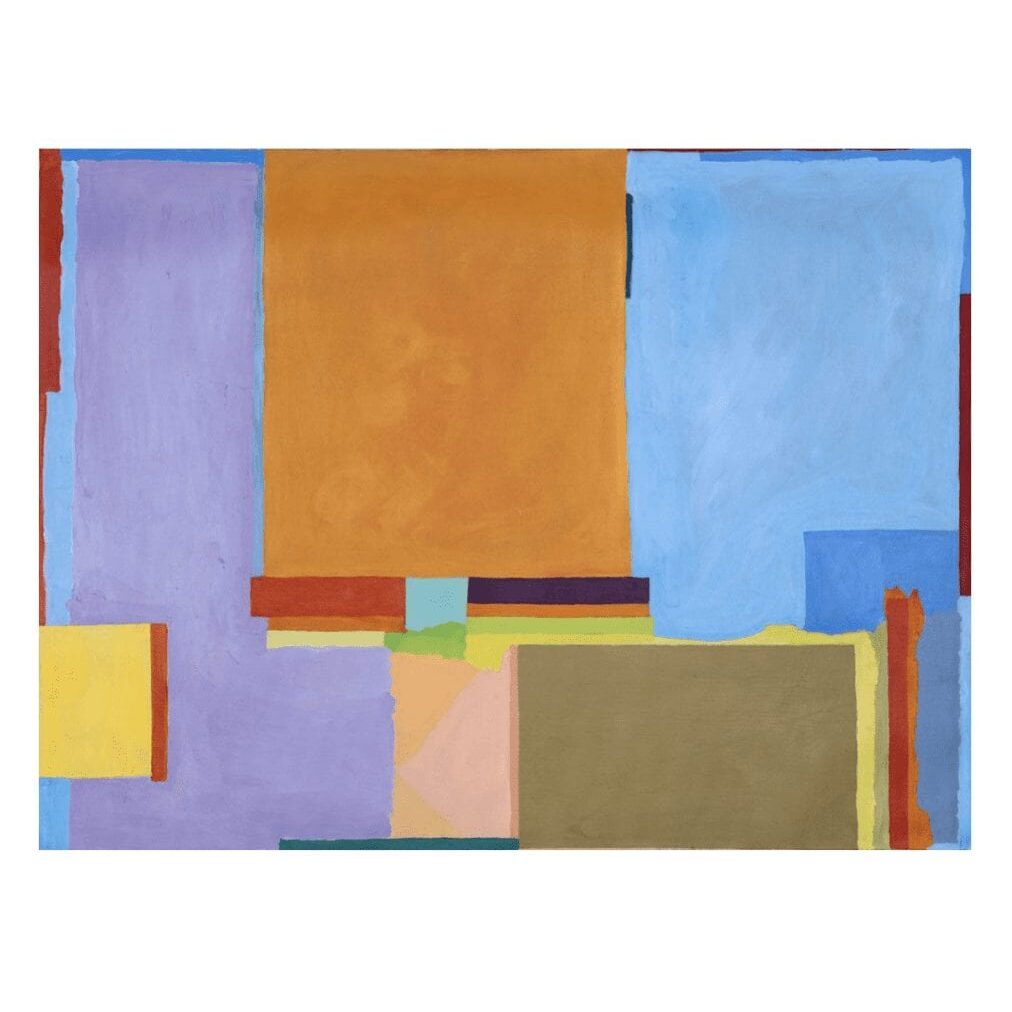
VIRGINIA CUPPAIDGE ‘PALE BLUE JACARANDA’ 1970 IS EXHIBITED IN ‘NEW WOMAN’ AT THE MUSEUM OF BRISBANE UNTIL MARCH 2020
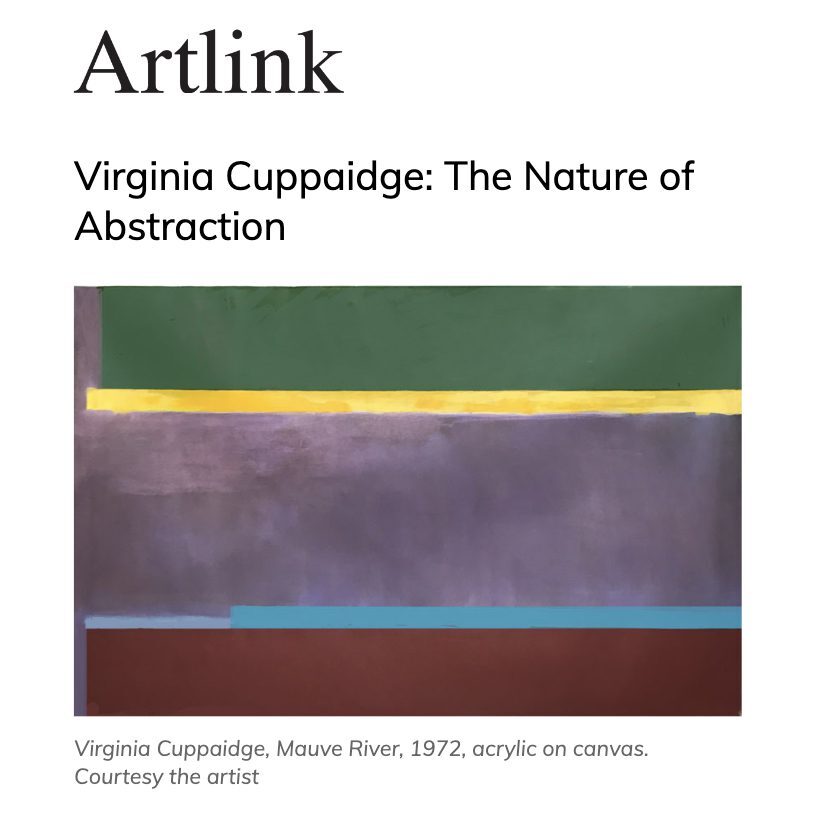
VIRGINIA CUPPAIDGE NEWCASTLE SURVEY EXHIBITION REVIEWED BY UNA REY FOR ‘ARTLINK’
Virginia Cuppaidge: The Nature of Abstraction https://www.artlink.com.au/articles/4770/virginia-cuppaidge-the-nature-of-abstraction/ Virginia Cuppaidge, Mauve River, 1972, acrylic on canvas. Courtesy the artist The forty-year chronology traced in Virginia Cuppaidge: The Nature of Abstraction begins with Mauve River (1972) and ends with Bee Map (2012). This survey is a coup for Newcastle Art Gallery and curator Sarah Johnson, with nineteen paintings and a single vitrine of archival…
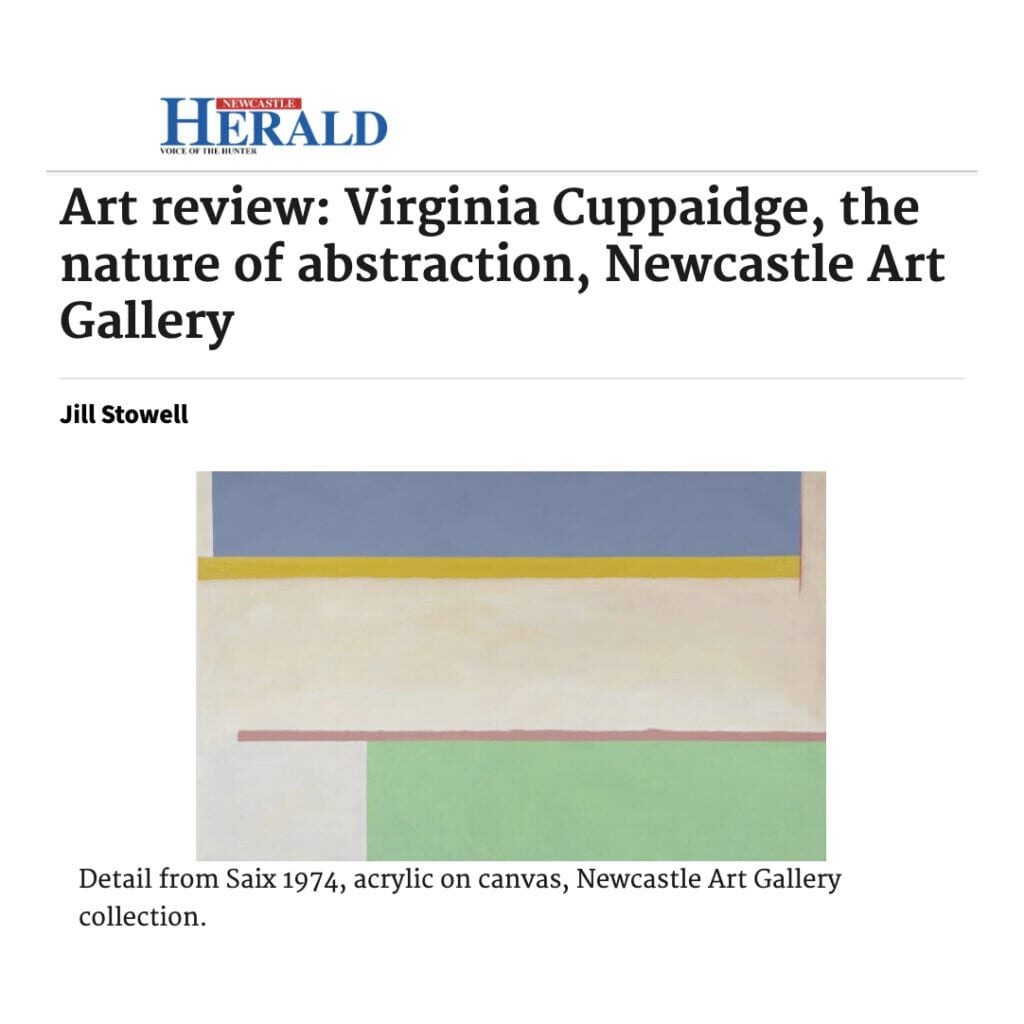
VIRGINIA CUPPAIDGE SURVEY ‘THE NATURE OF ABSTRACTION’ REVIEWED BY JILL STOWELL IN THE NEWCASTLE HERALD
Art review: Virginia Cuppaidge, the nature of abstraction, Newcastle Art Gallery Jill Stowell Virginia Cuppaidge is an Australian artist who has also been an international figure for the last 40 years, though unlike the Francophiles Rupert Bunny and John Russell in an earlier generation, she has regularly exhibited her vibrant abstract paintings in Australia as…
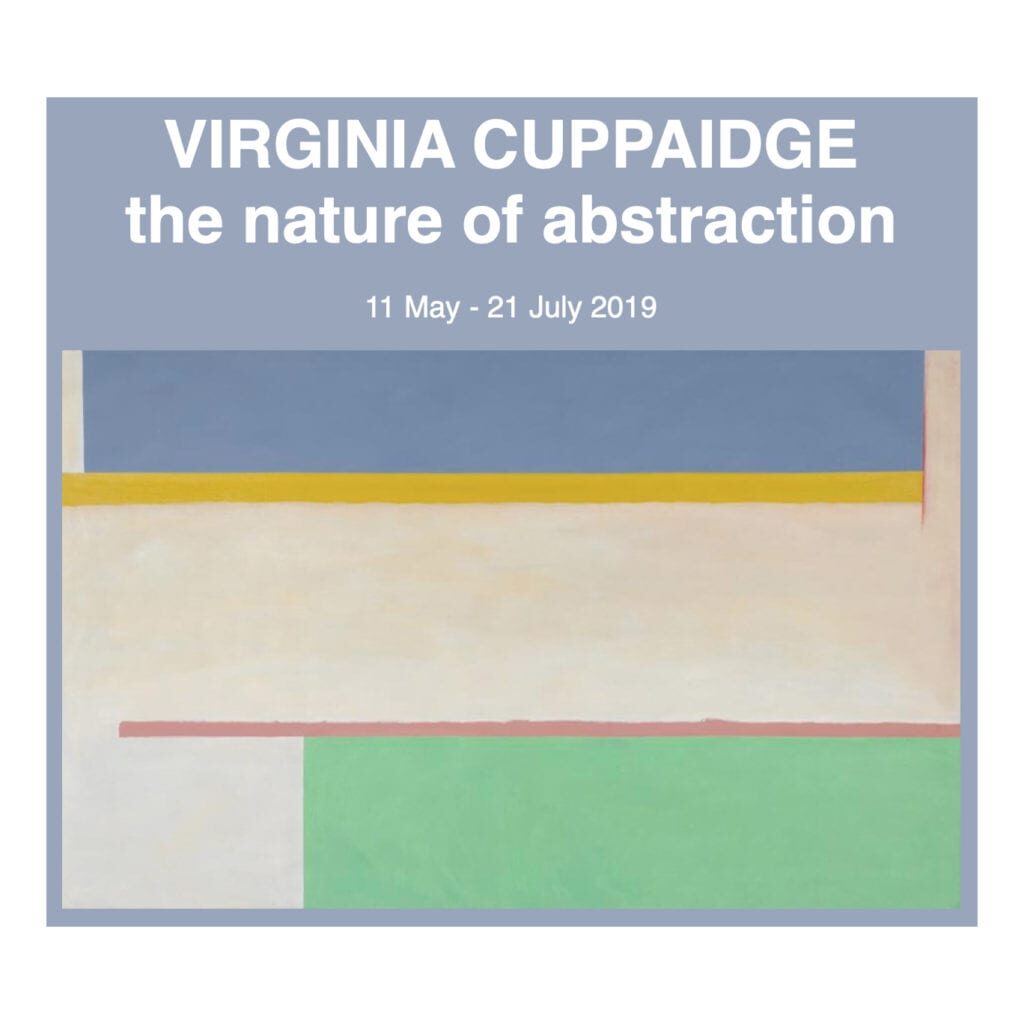
VIRGINIA CUPPAIDGE SURVEY EXHIBITION ‘THE NATURE OF ABSTRACTION’ CURRENT AT NEWCASTLE ART GALLERY TO 21 JULY 2019
Virginia Cuppaidge is recognised as one of Australia’s foremost abstract painters. Her connections with Newcastle have been enduring and with this the recent donation of the geometric painting Saix 1974 to the Newcastle Art Gallery collection in 2018. The exhibition is a survey of the last forty plus years work by the artist and maps the career…
- « Previous
- 1
- 2
- 3
- Next »
